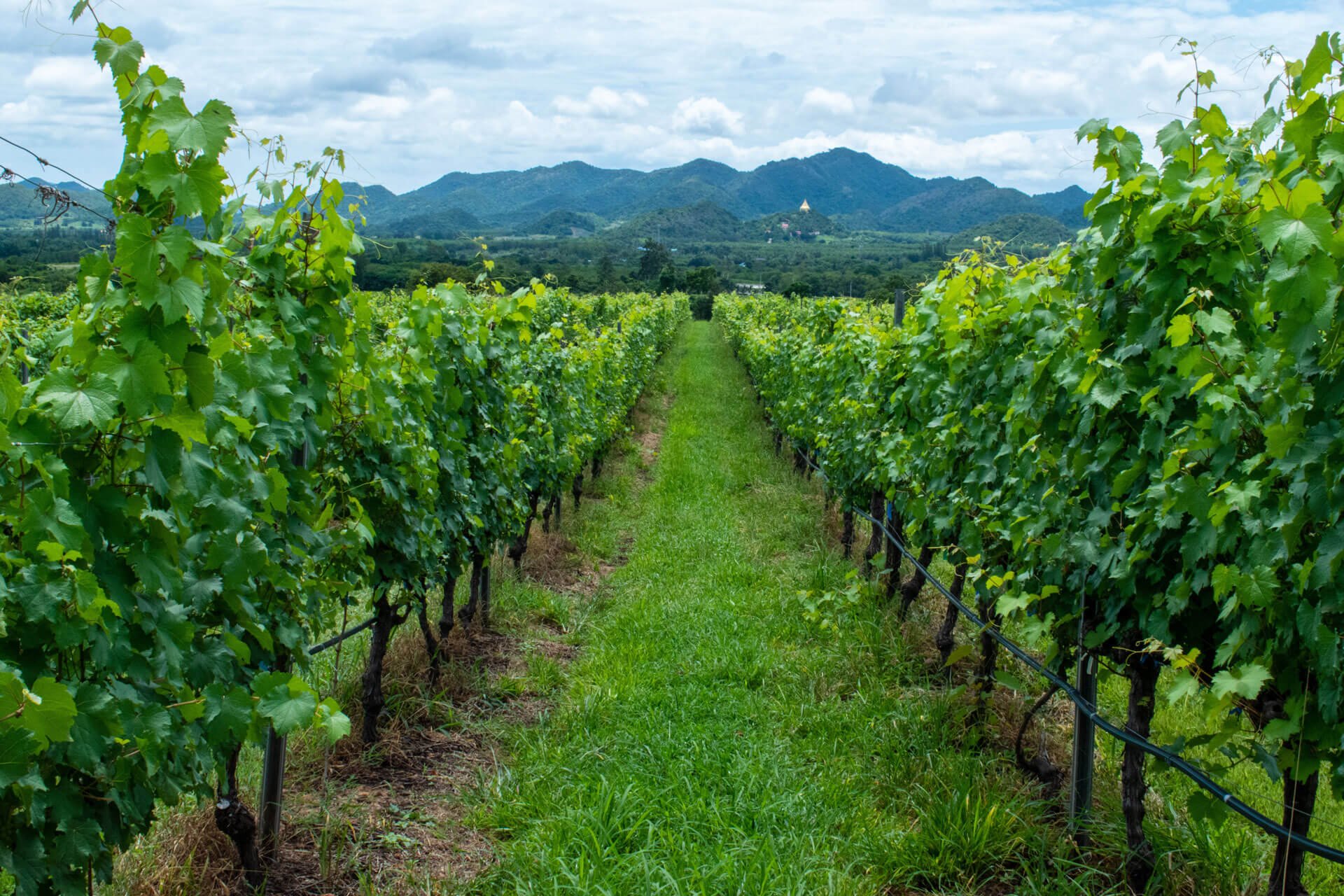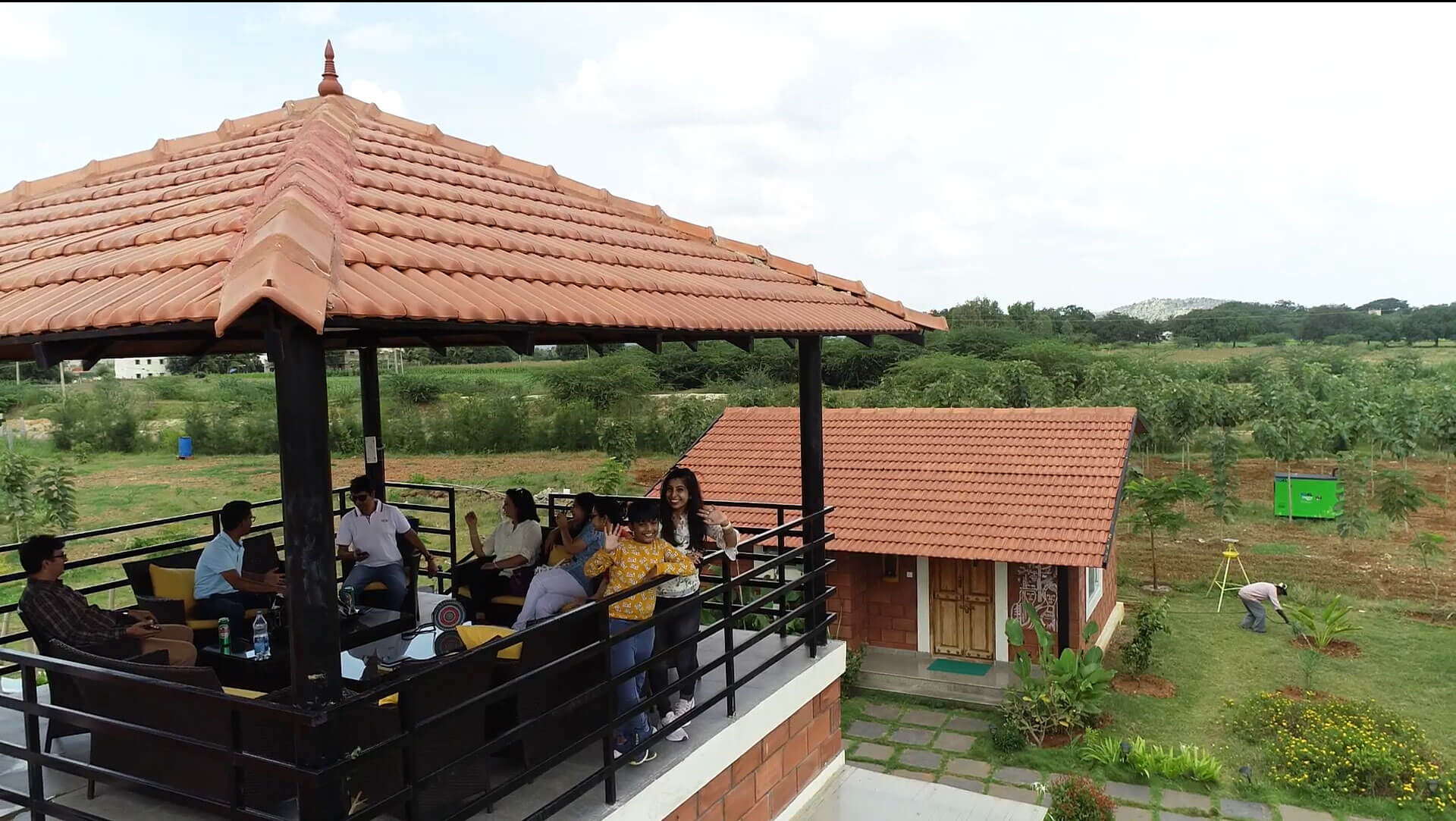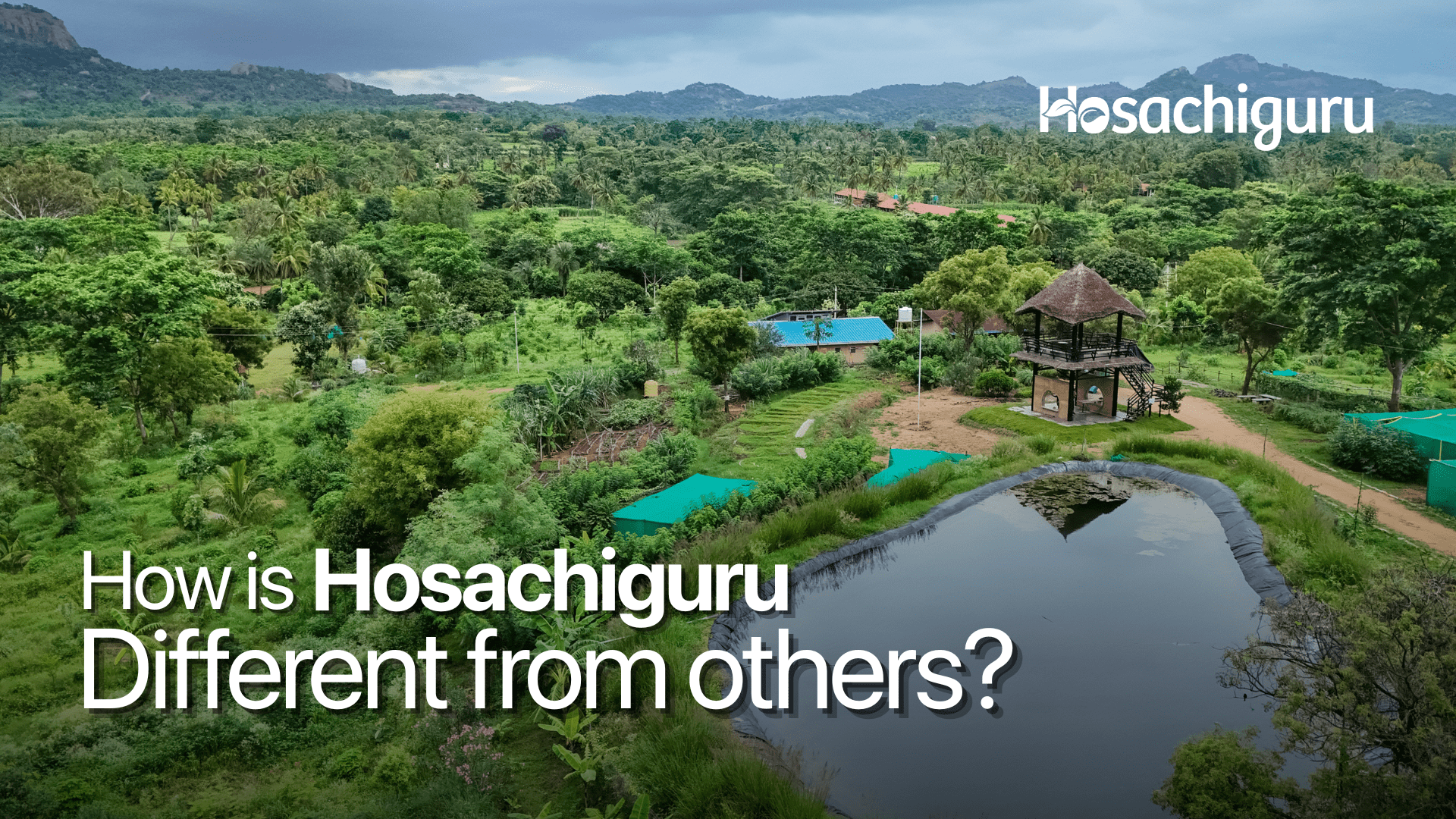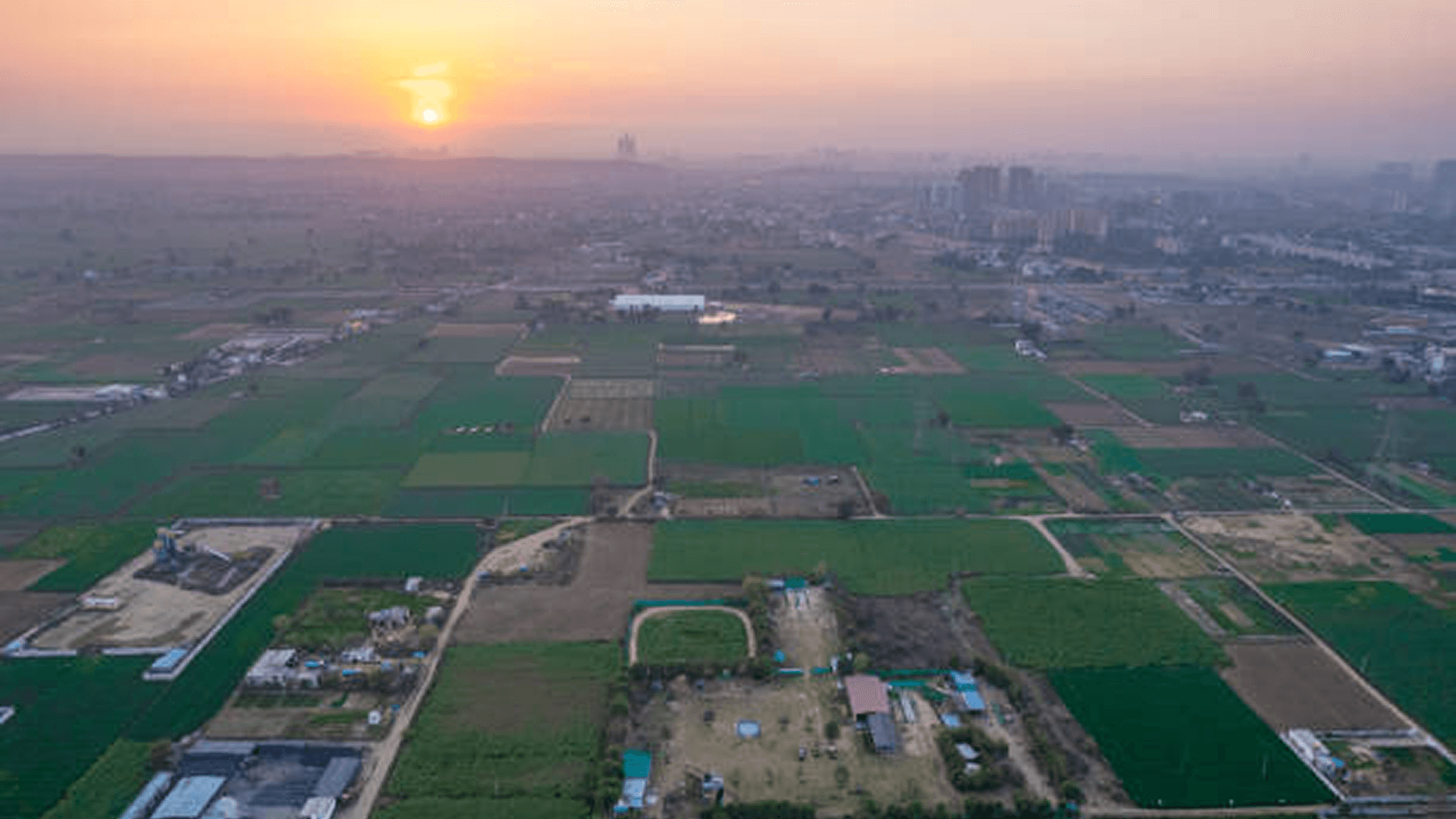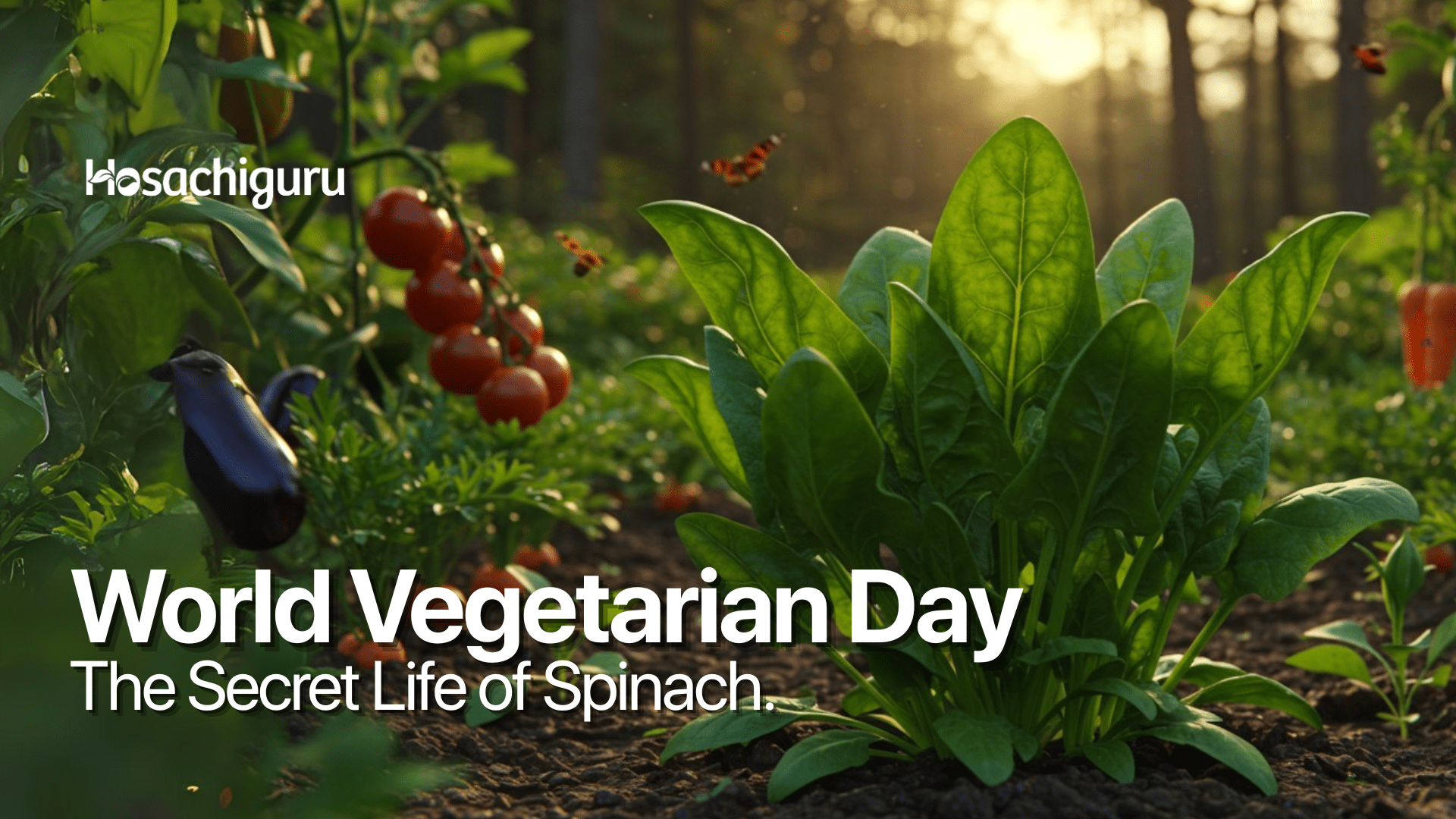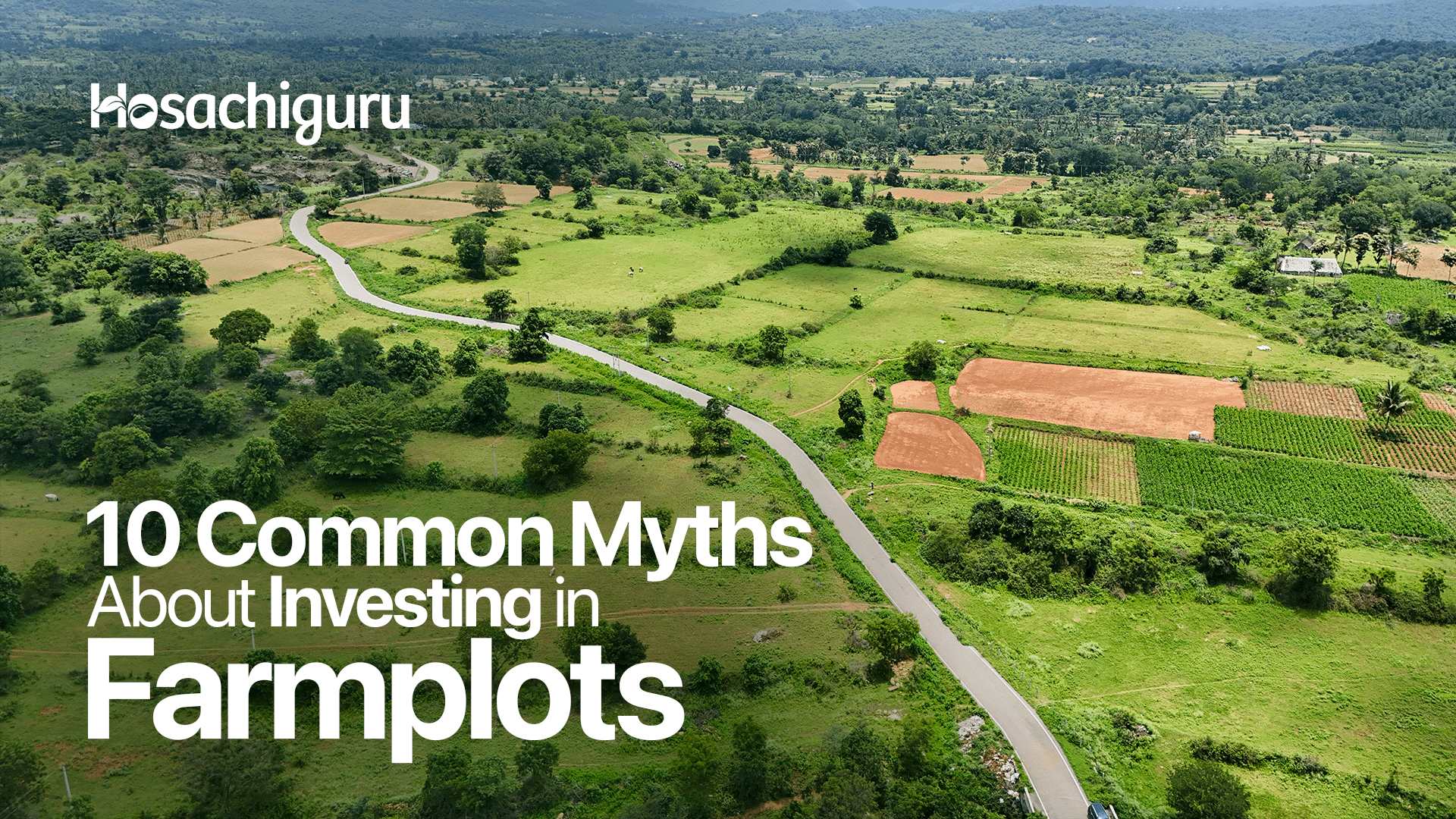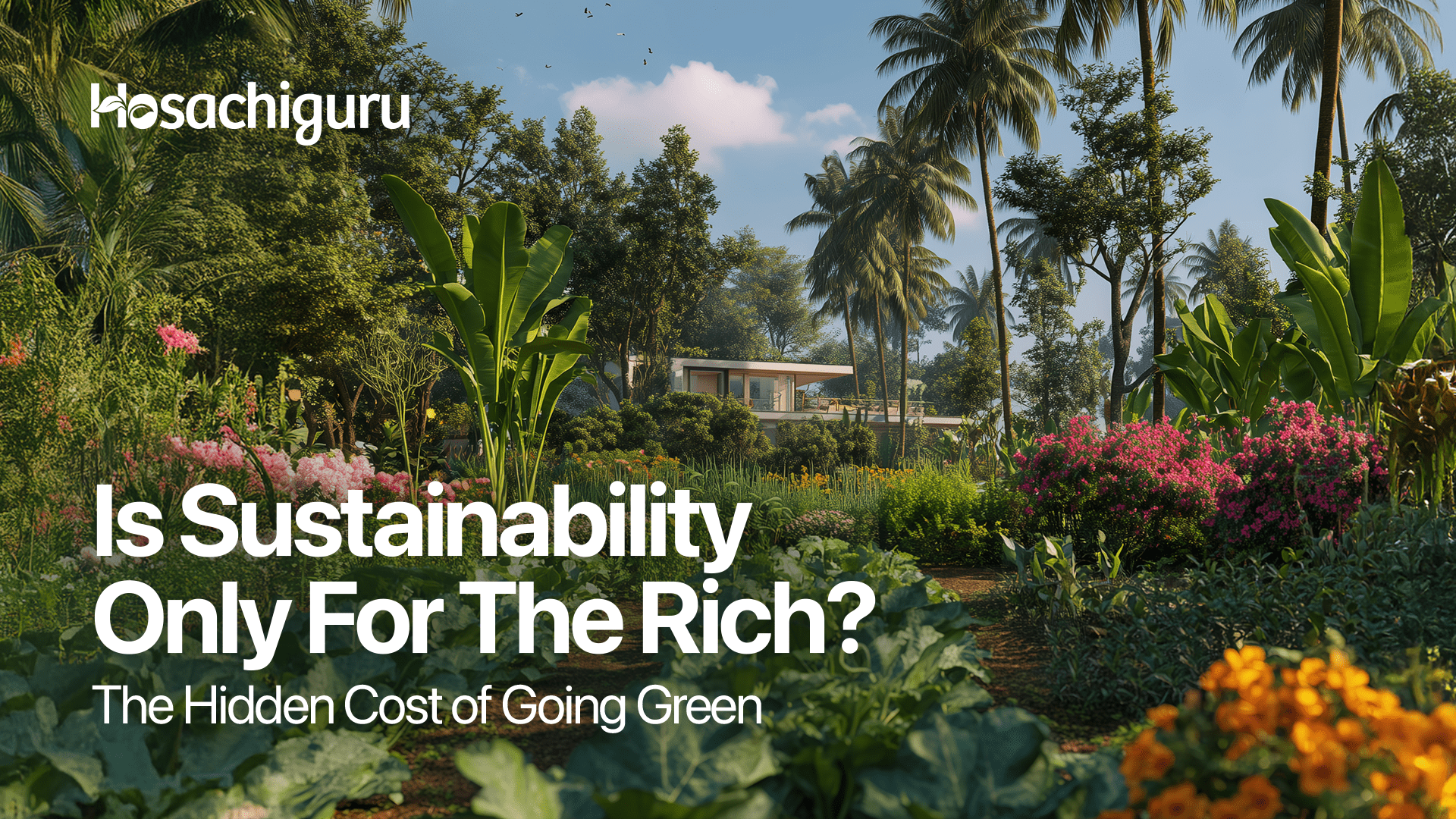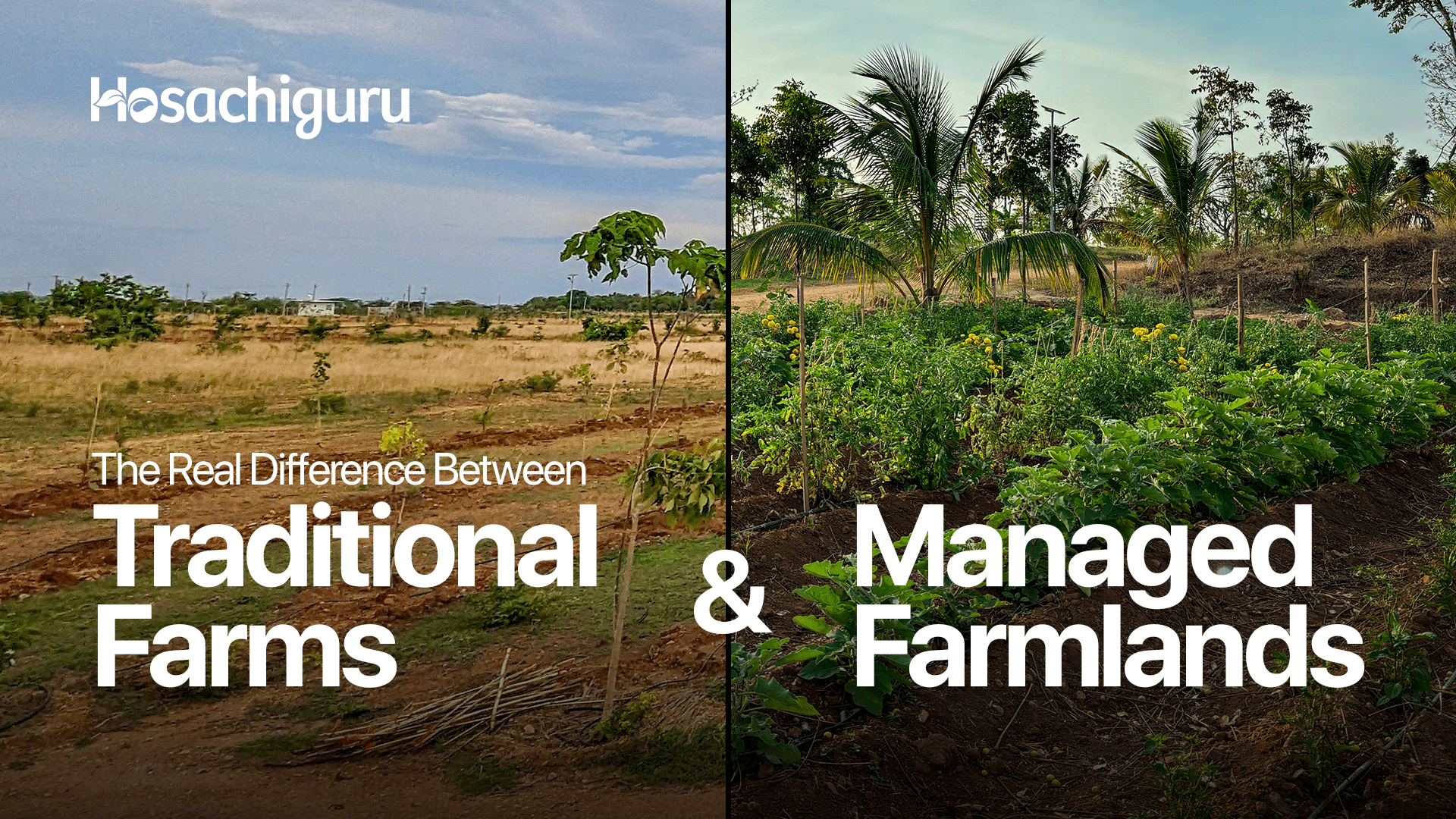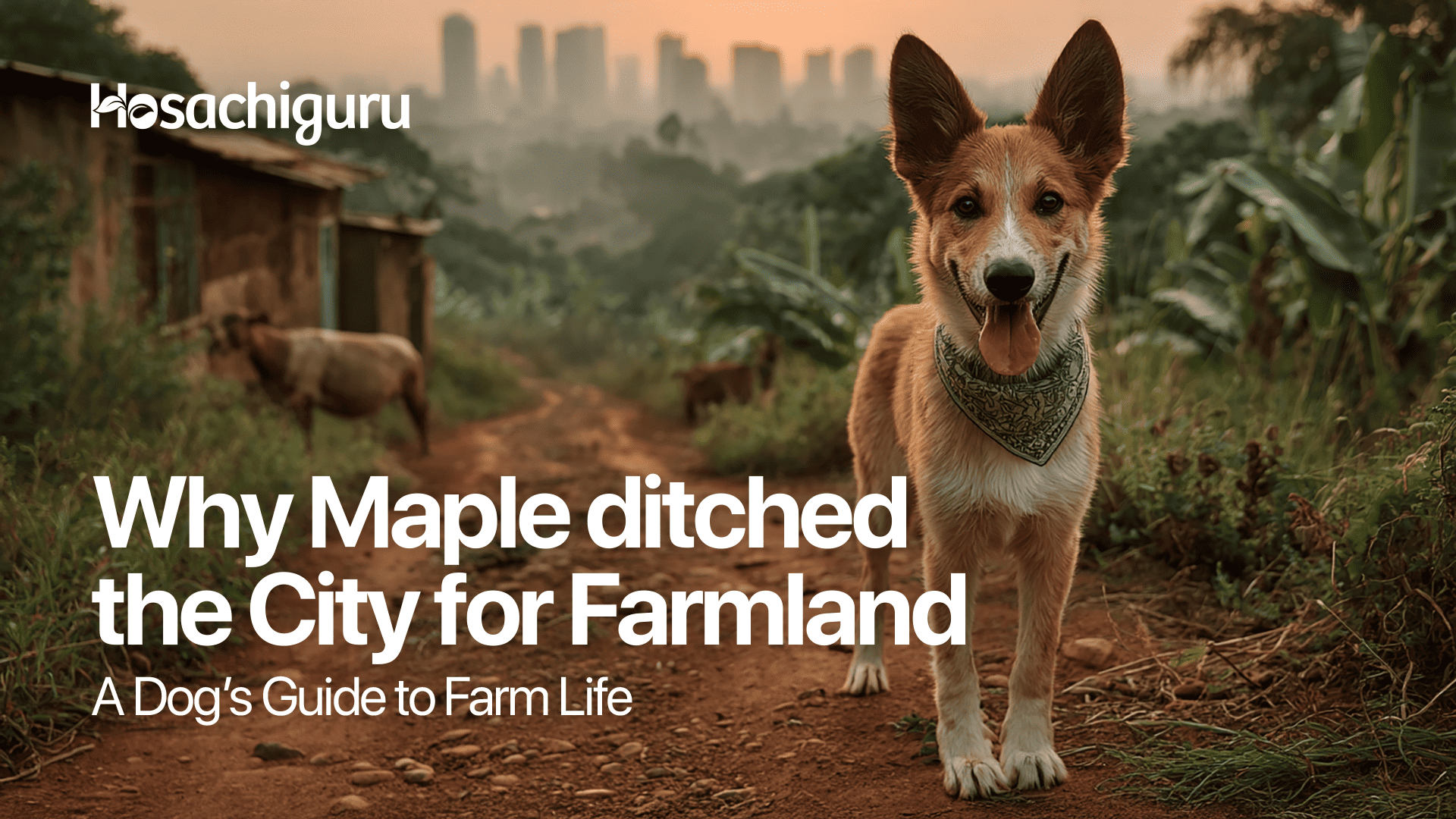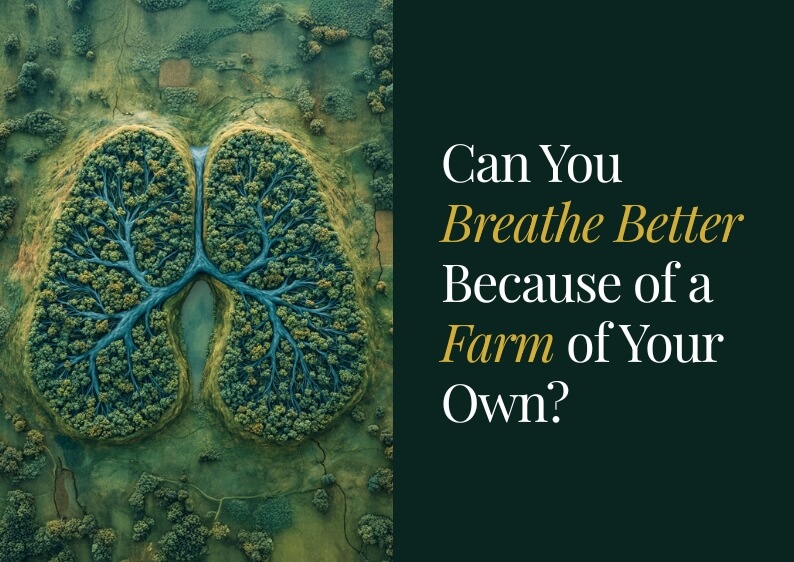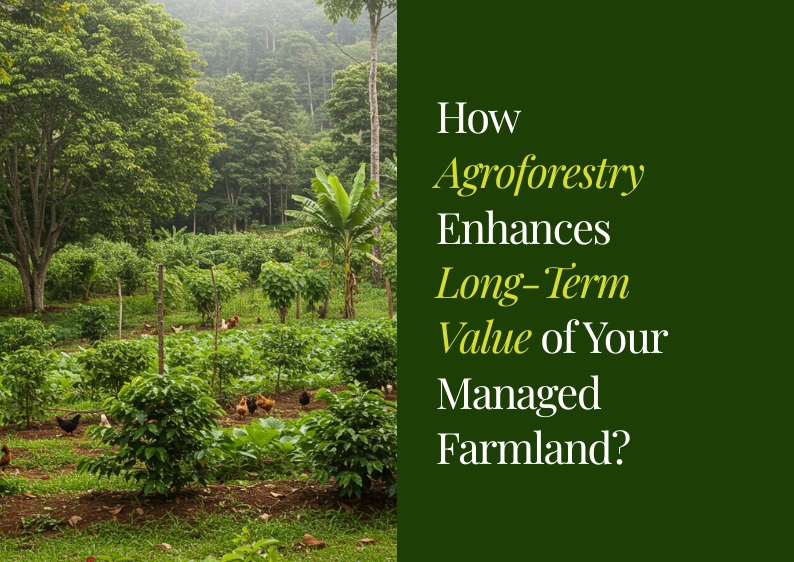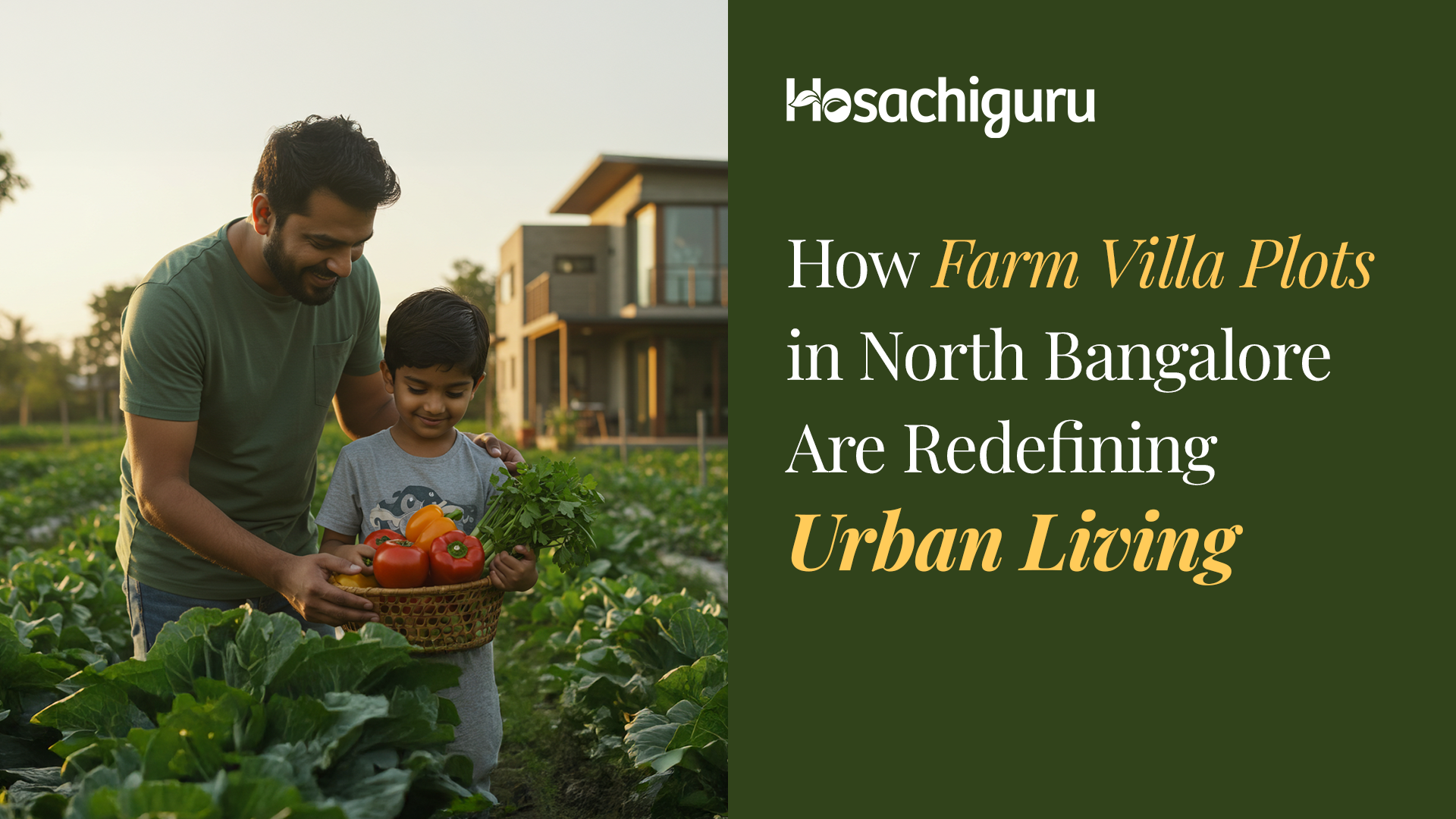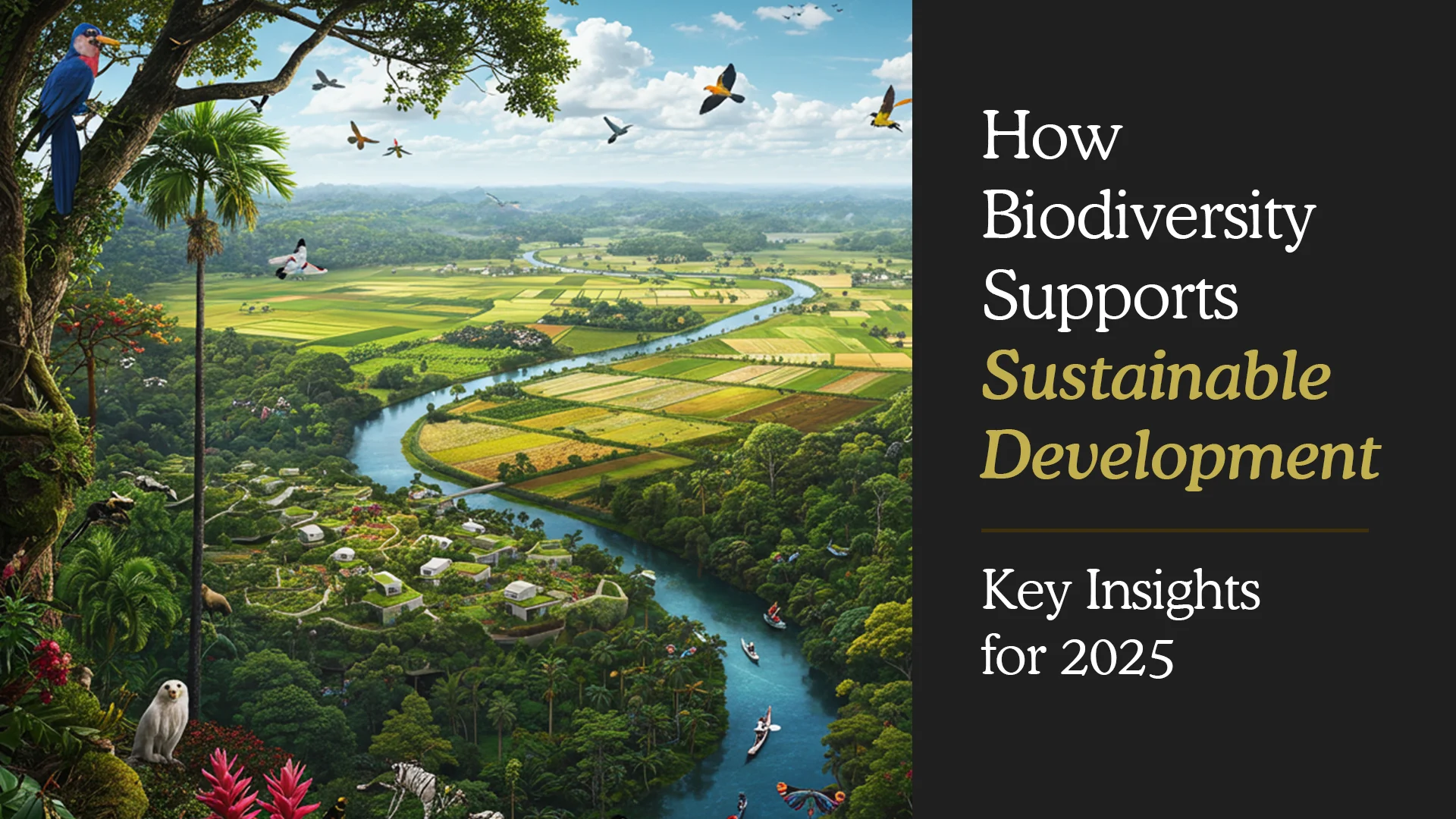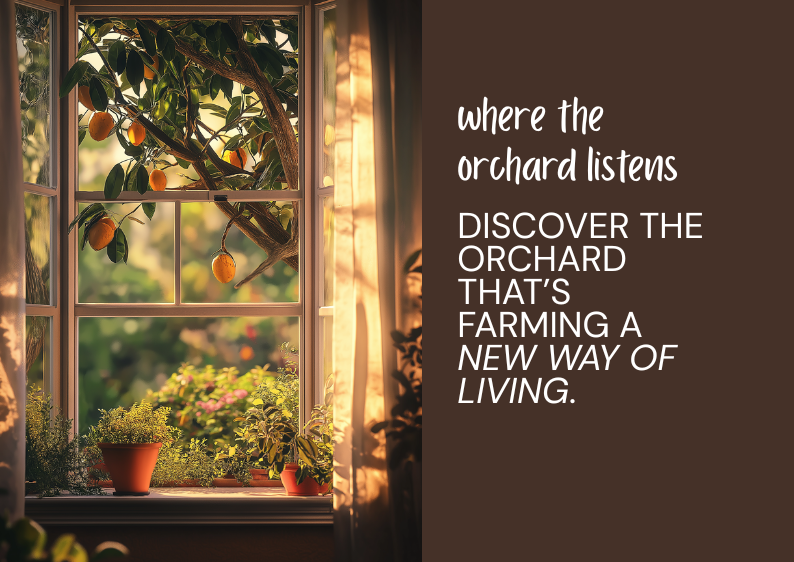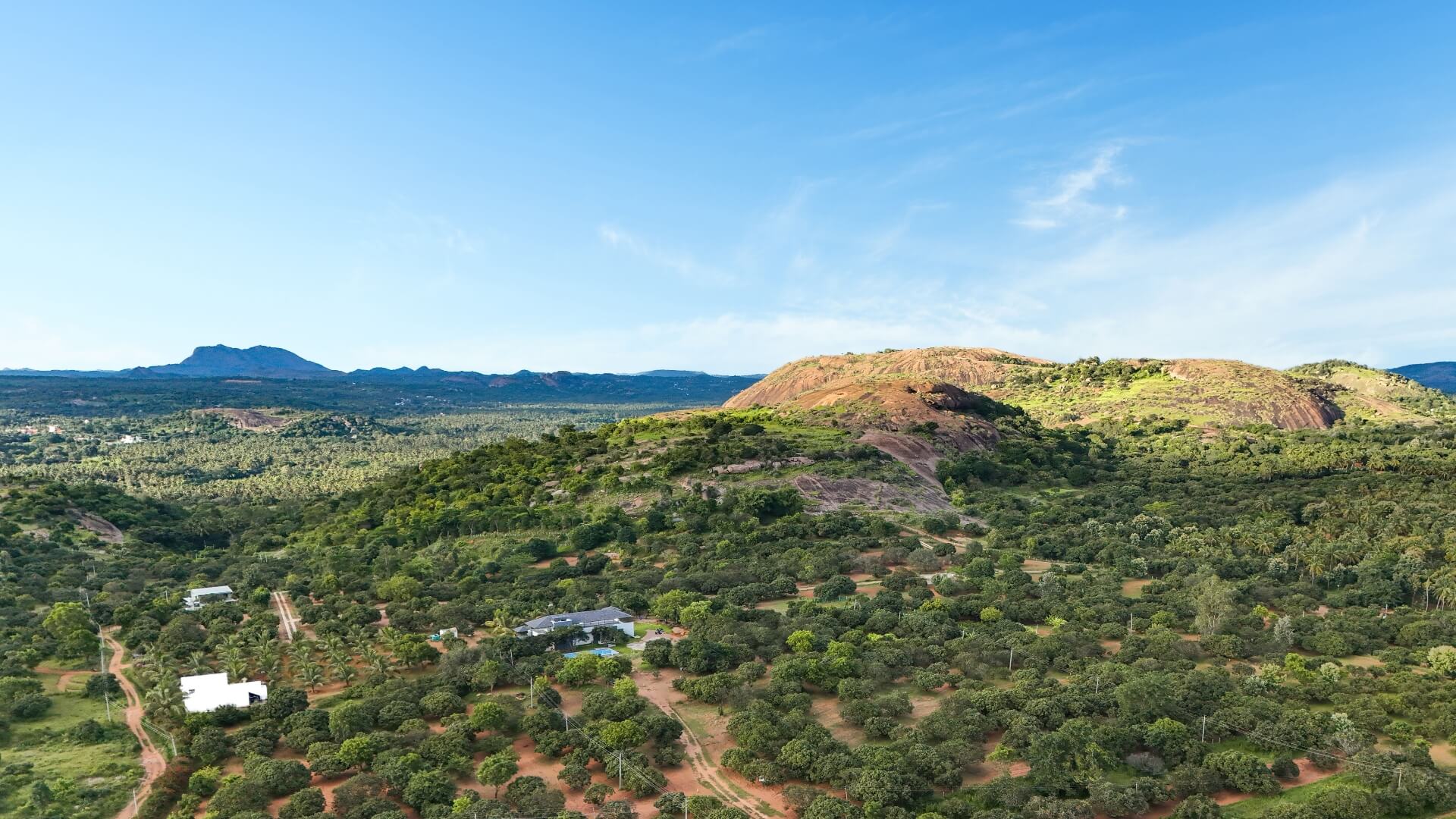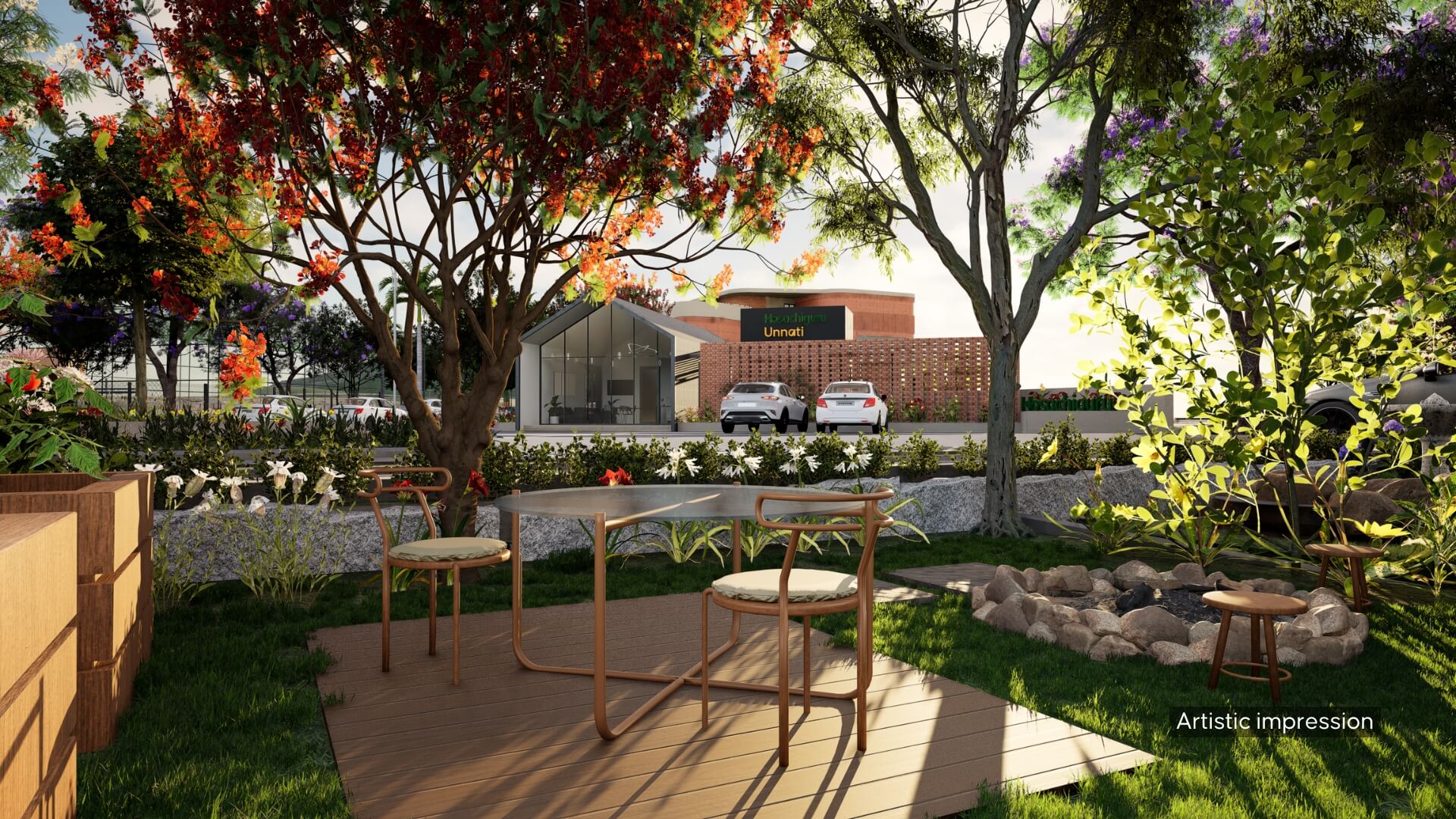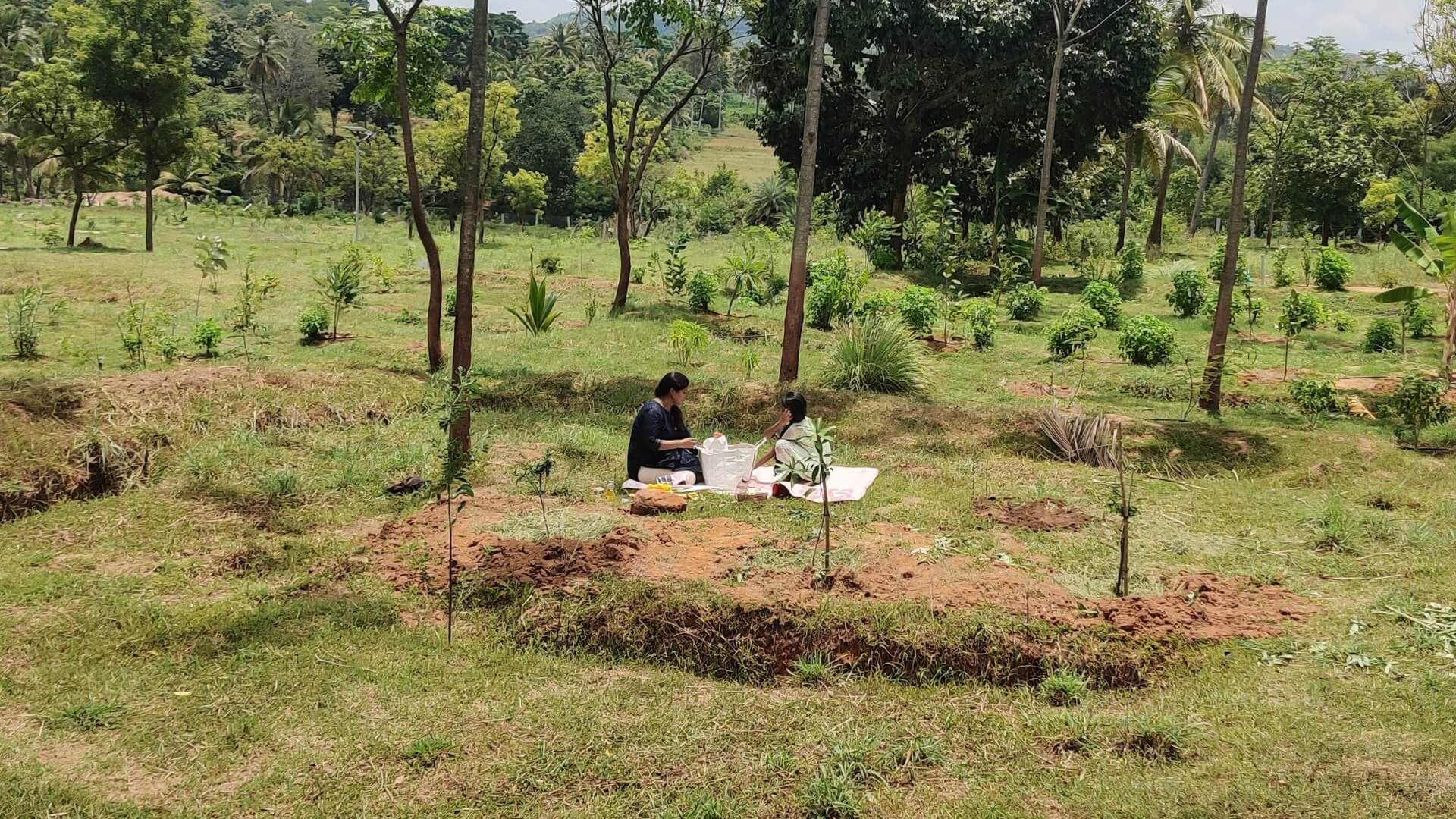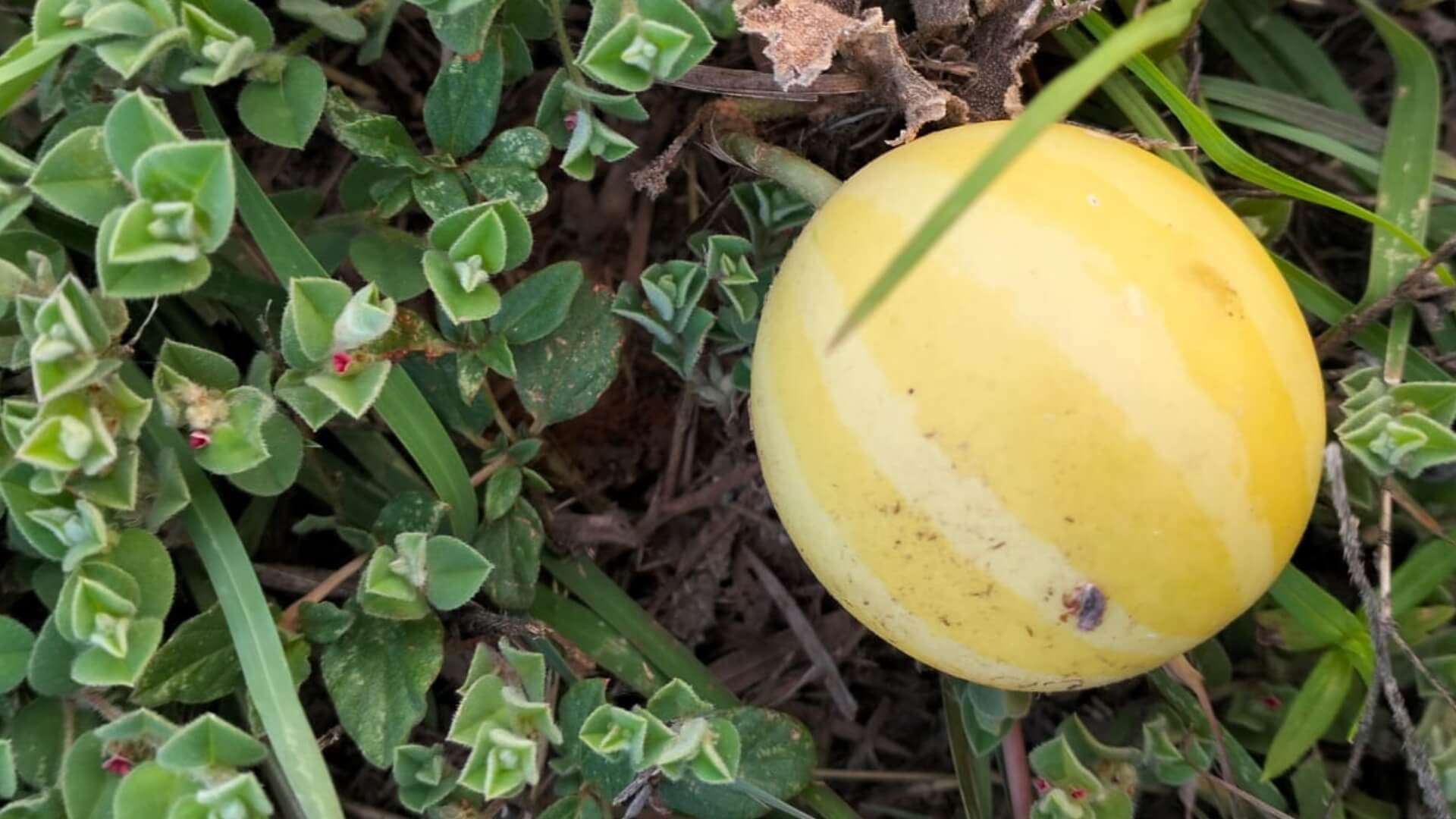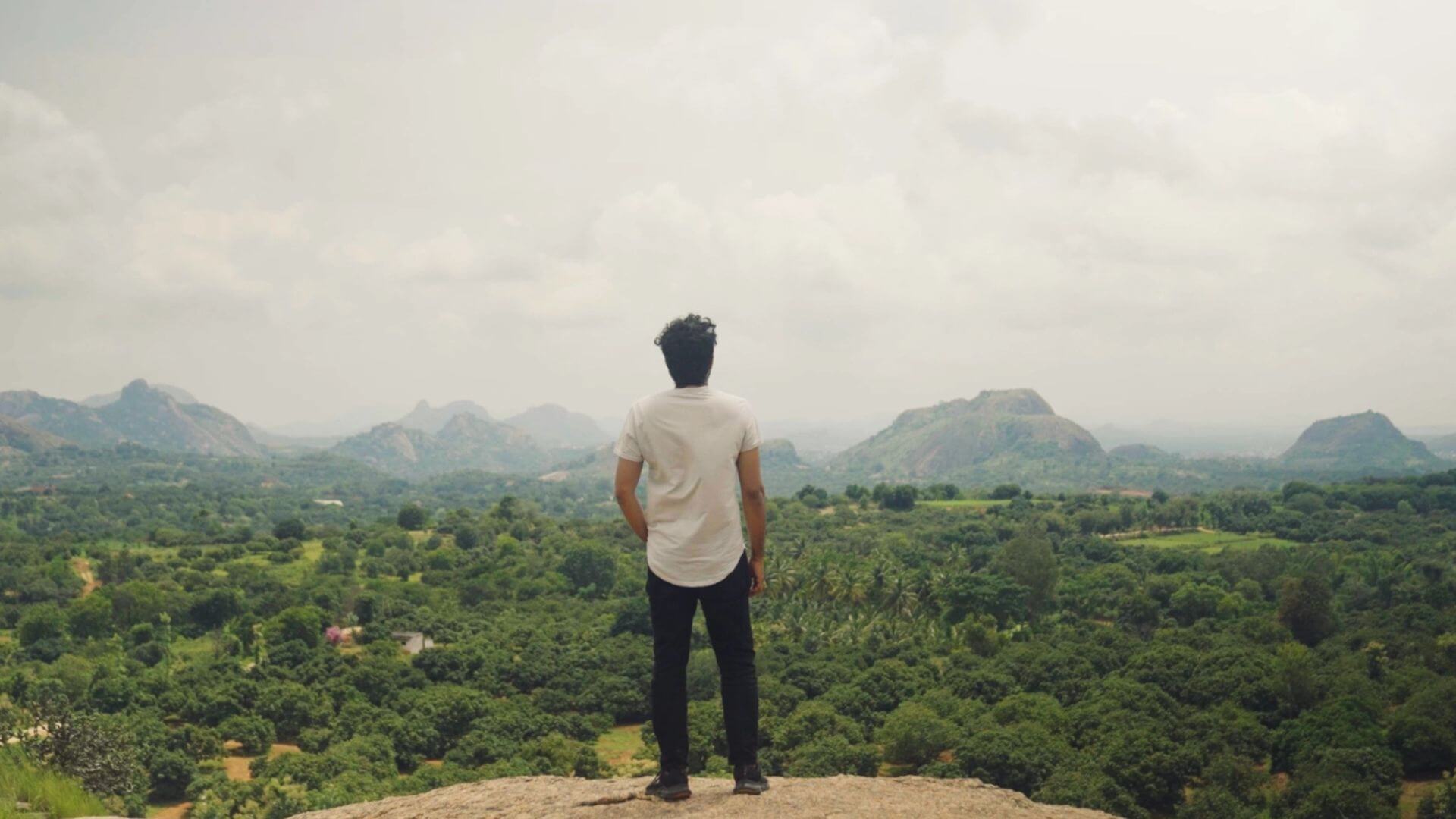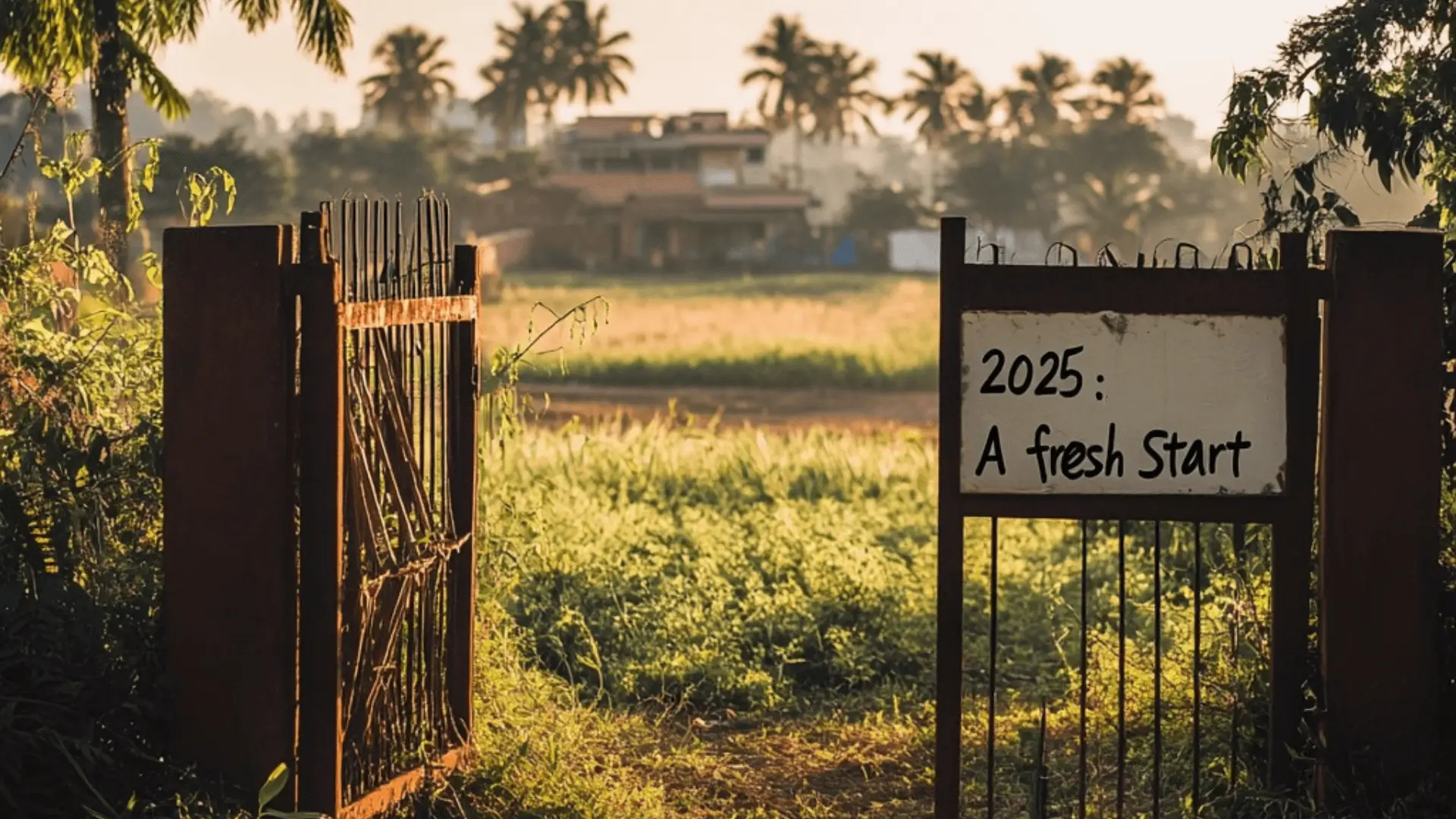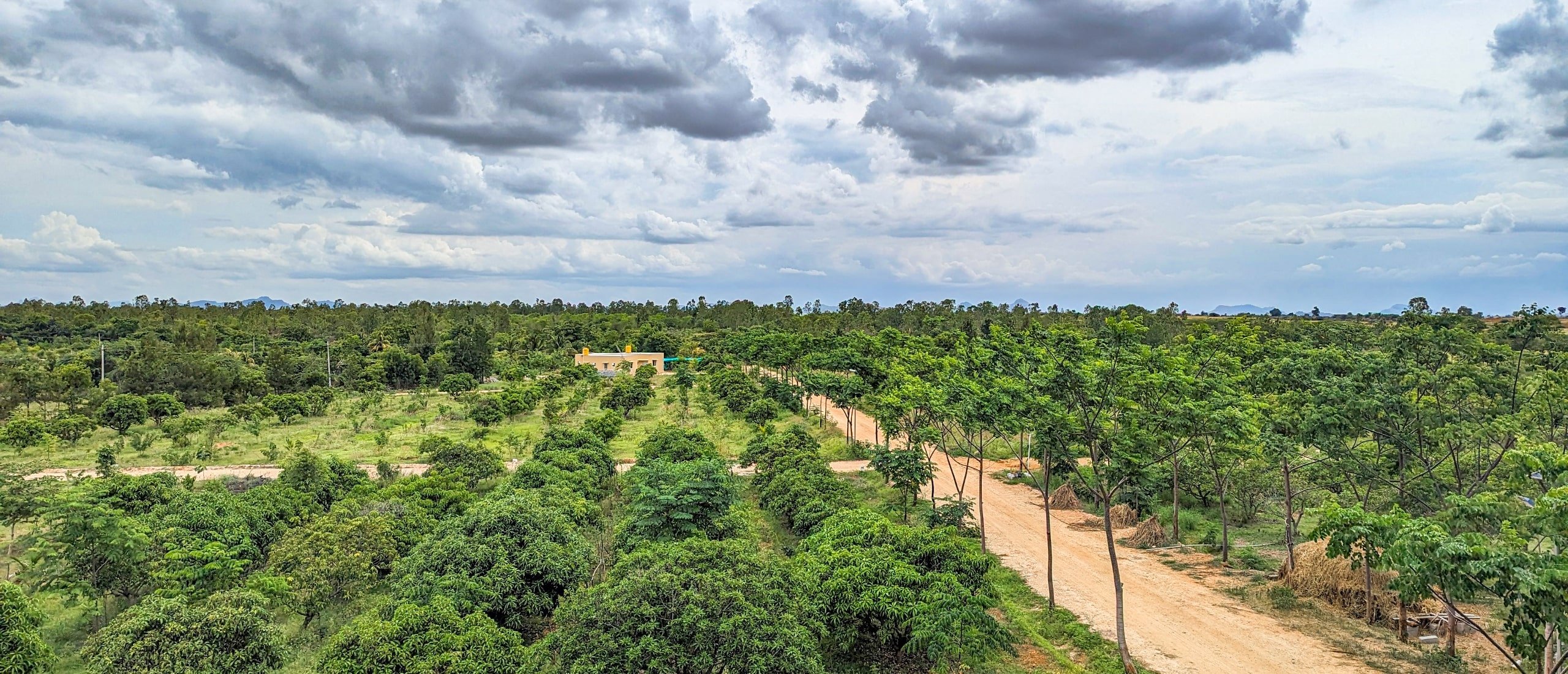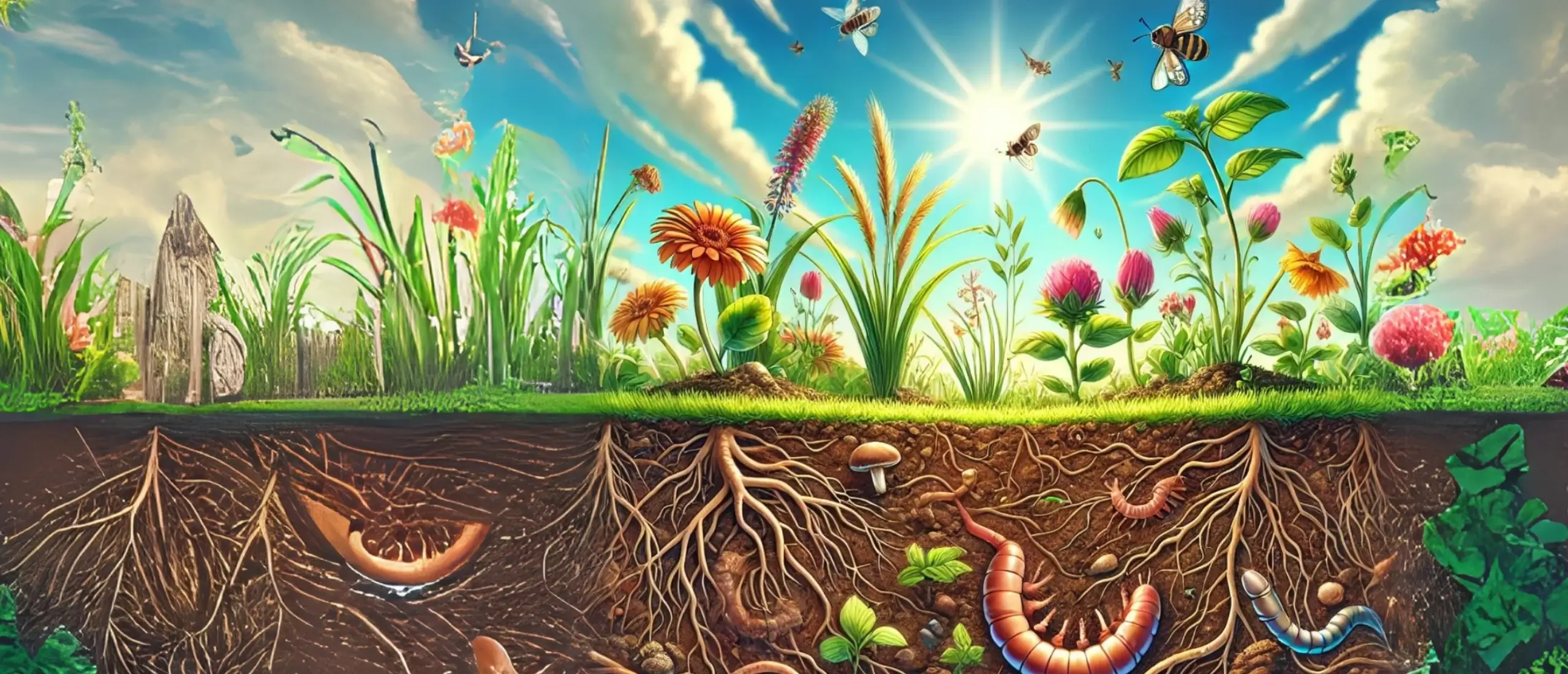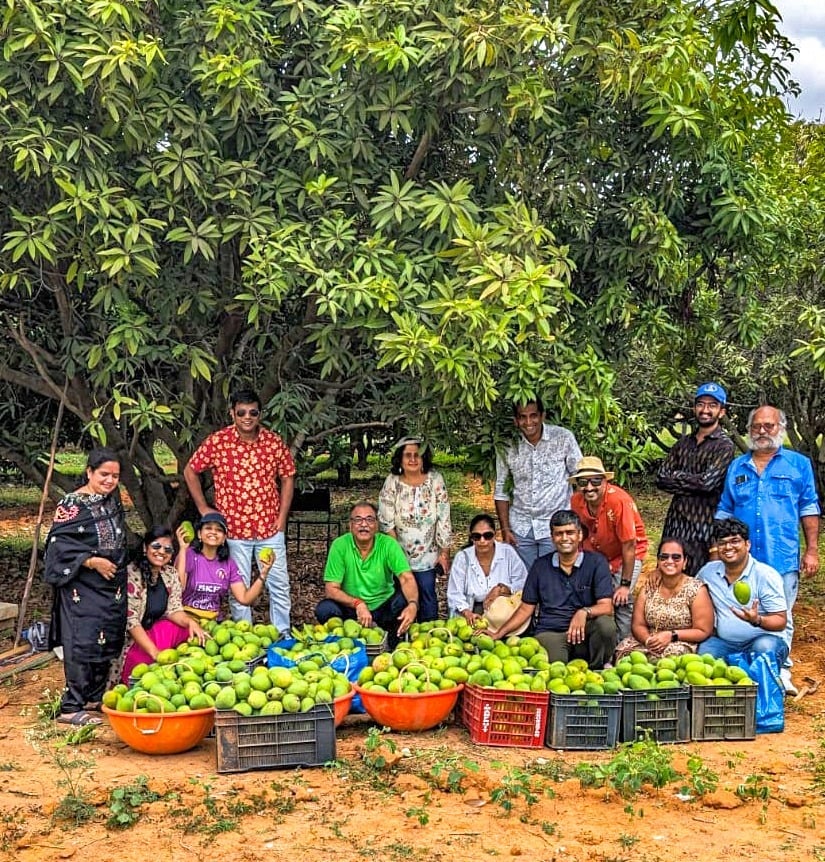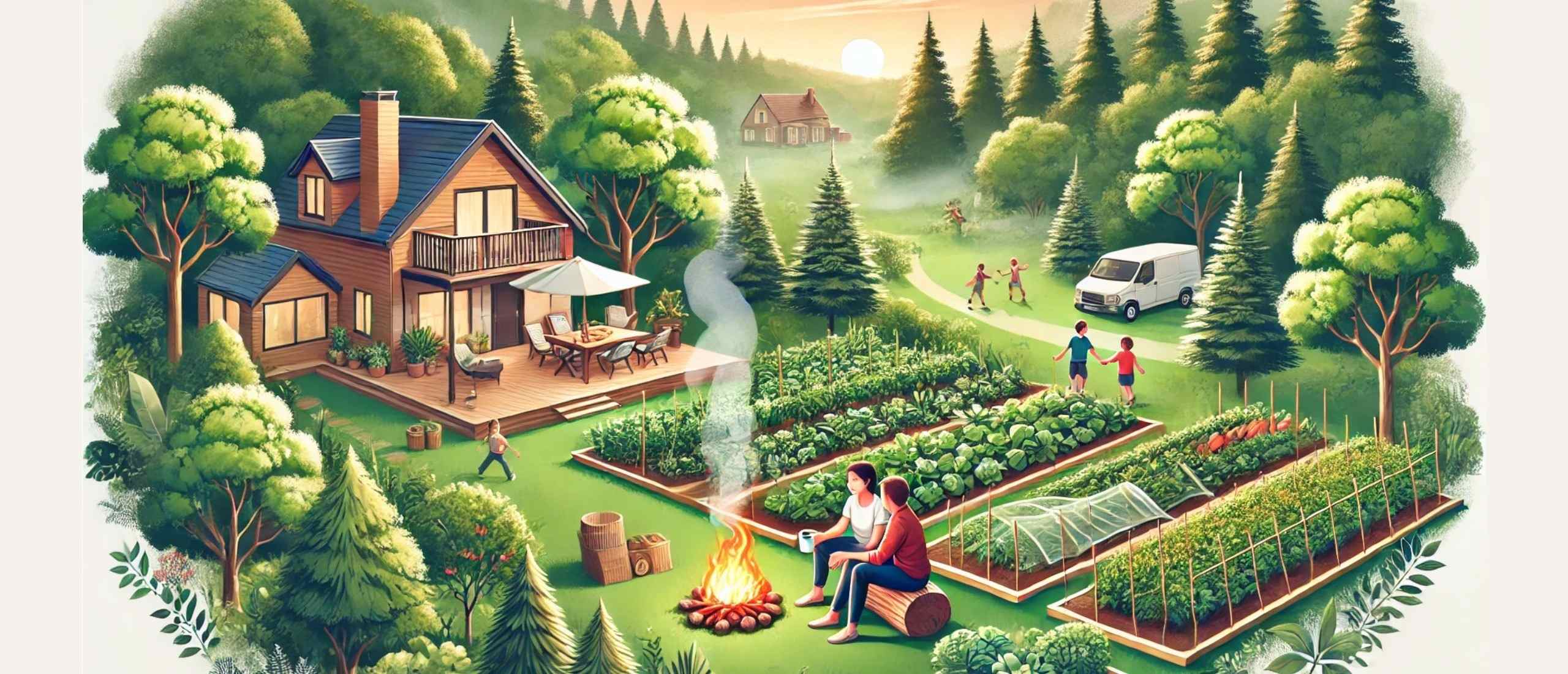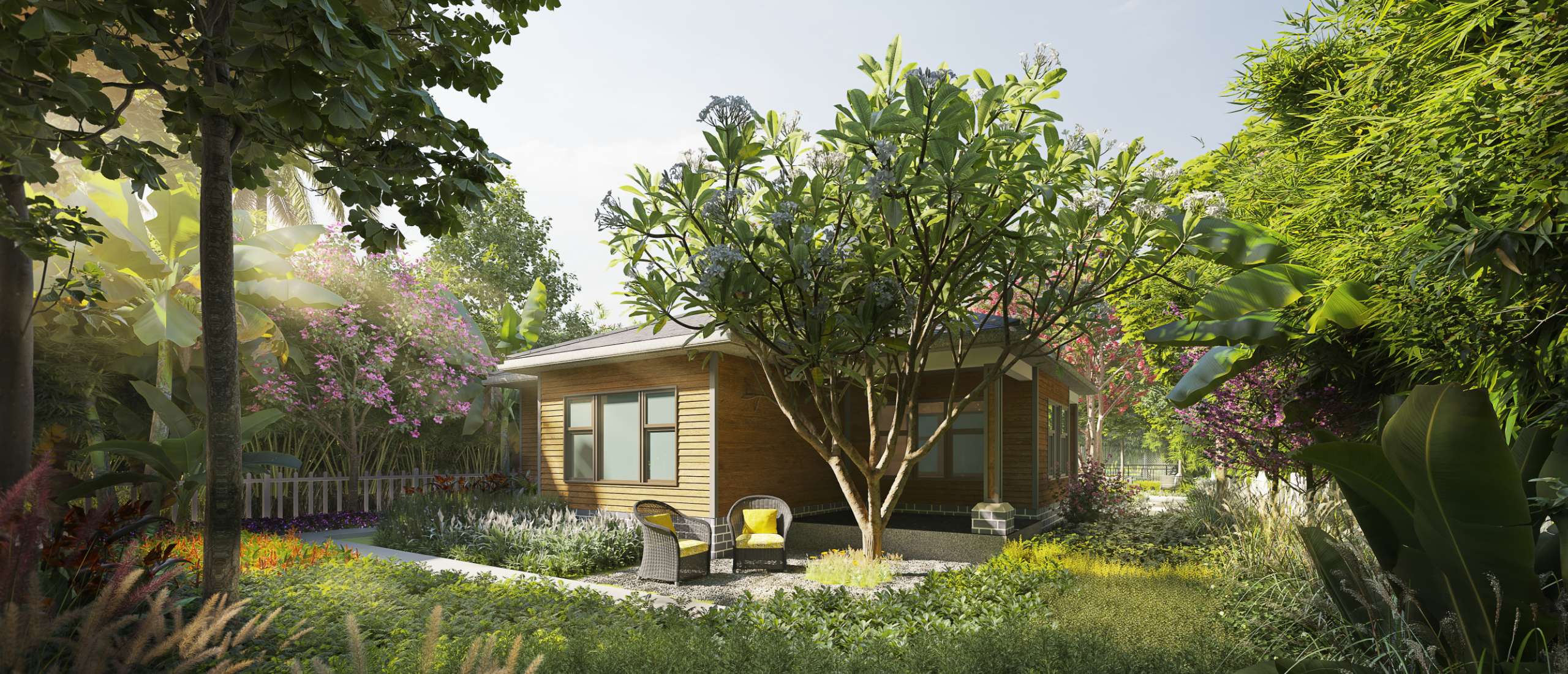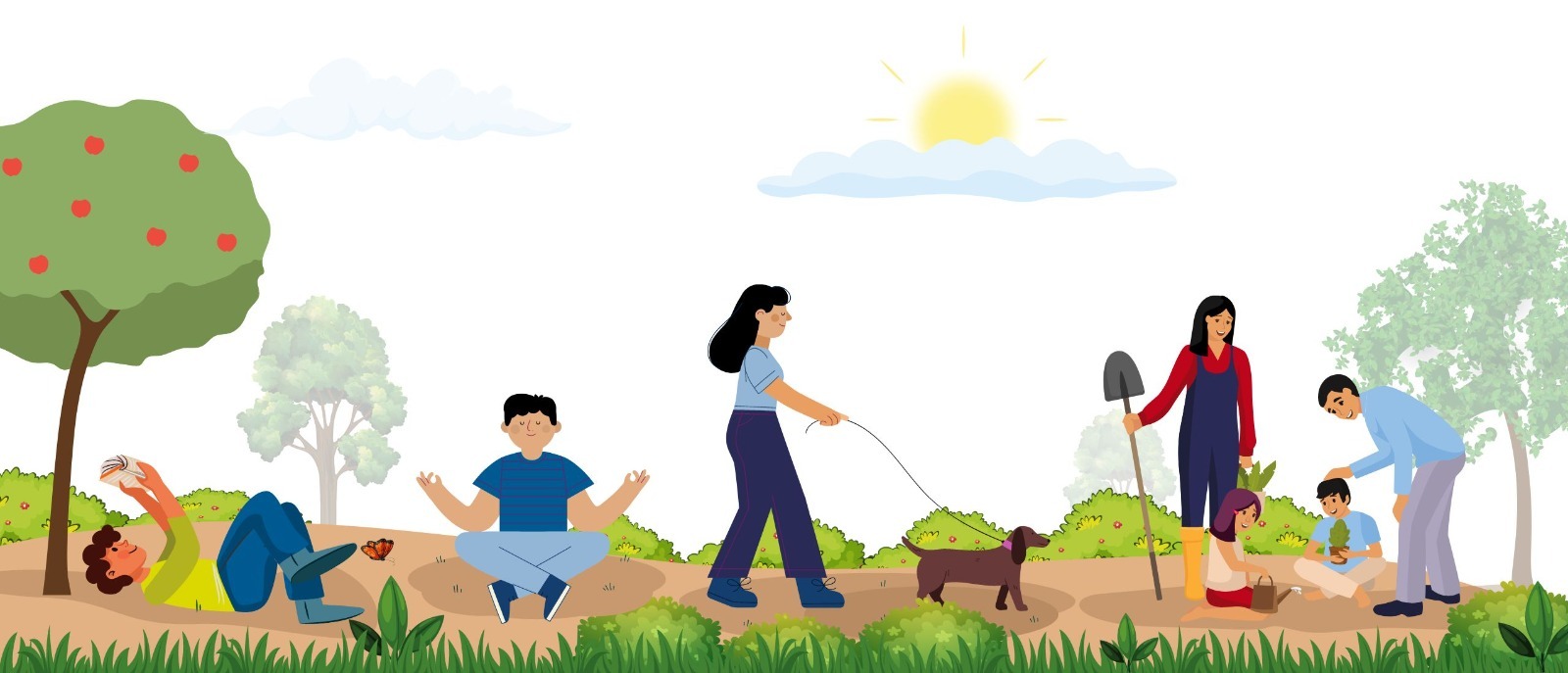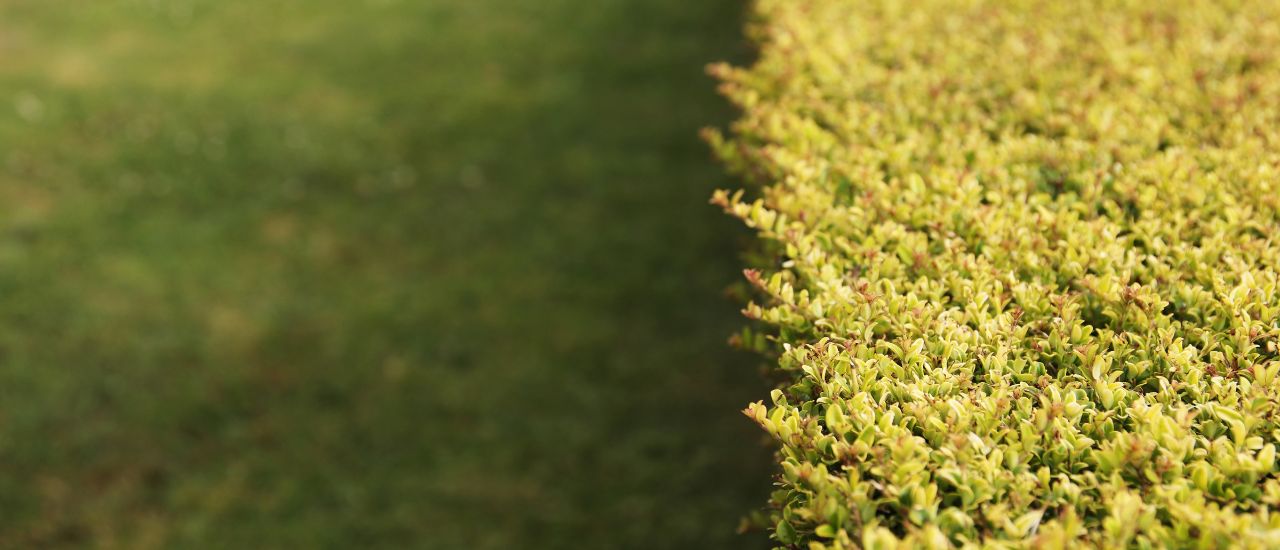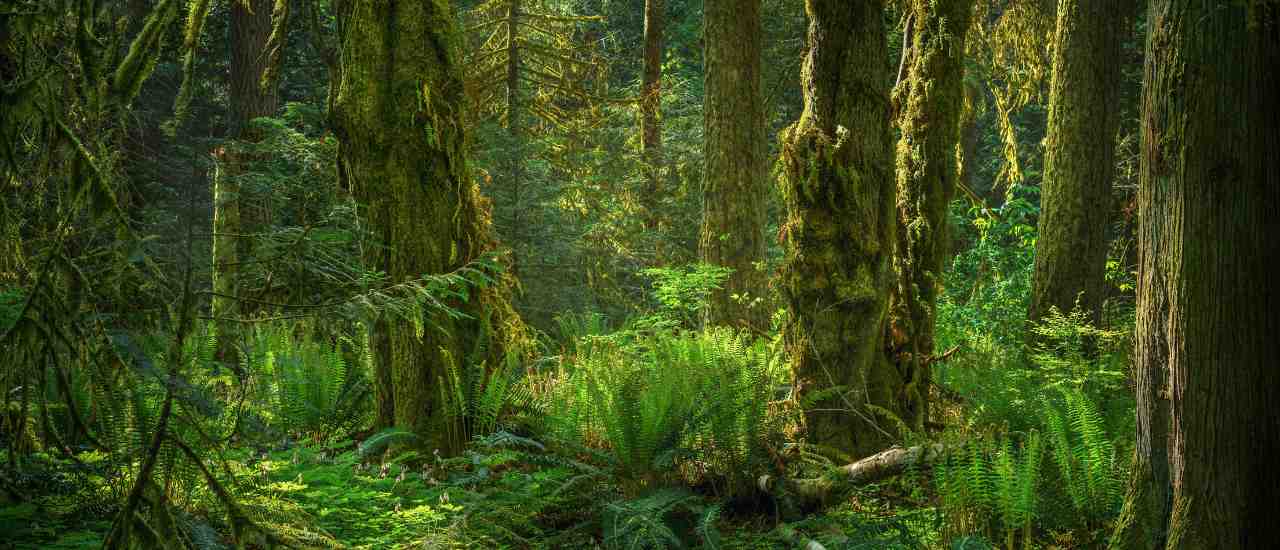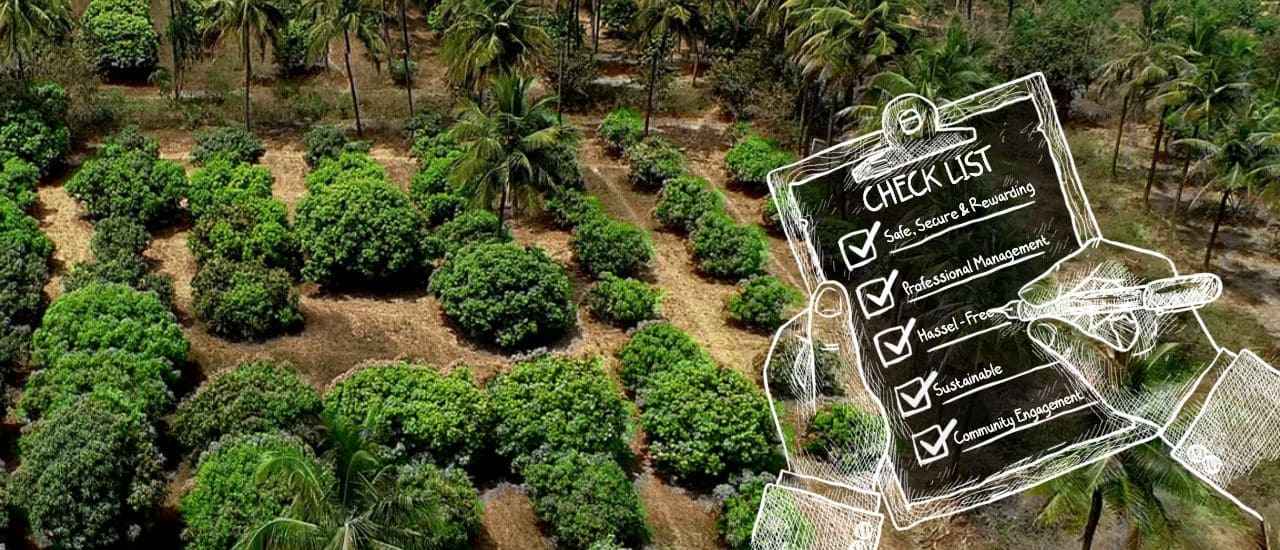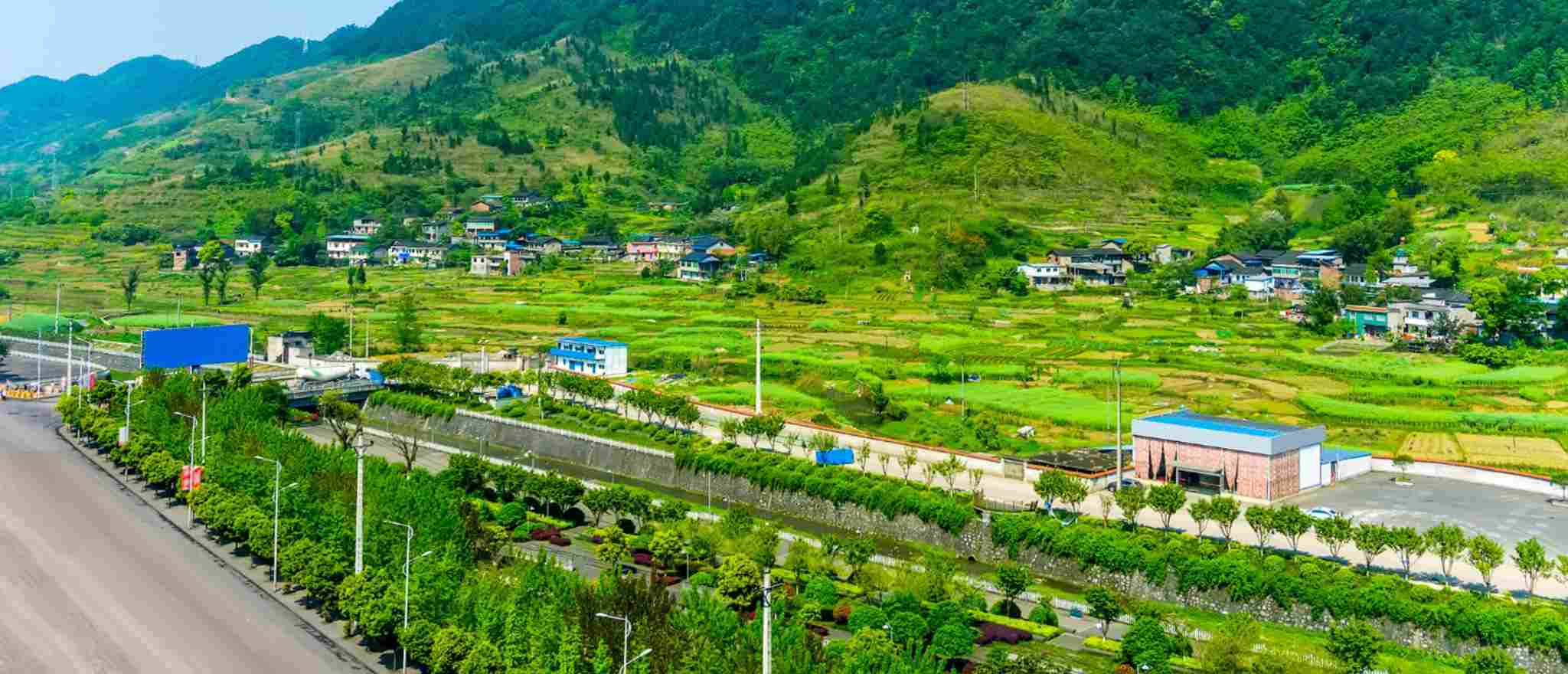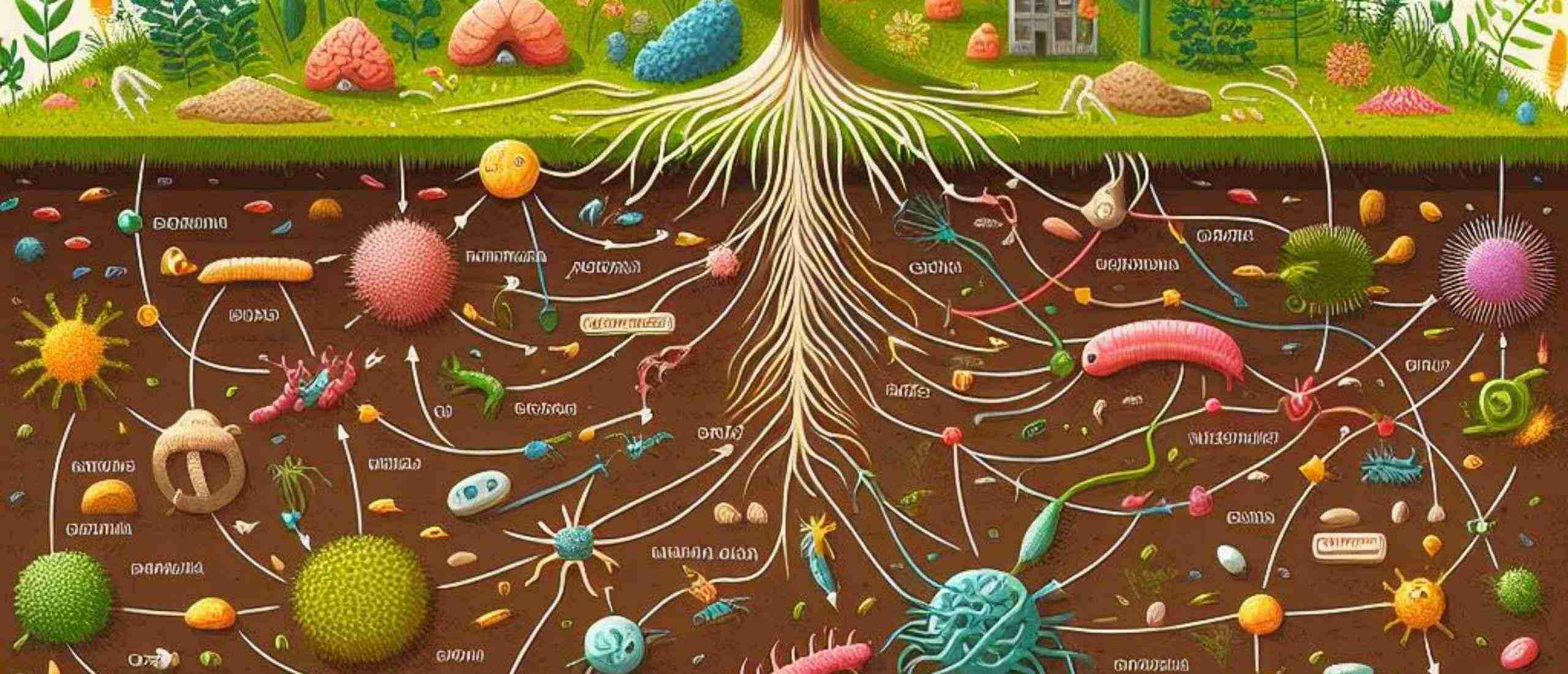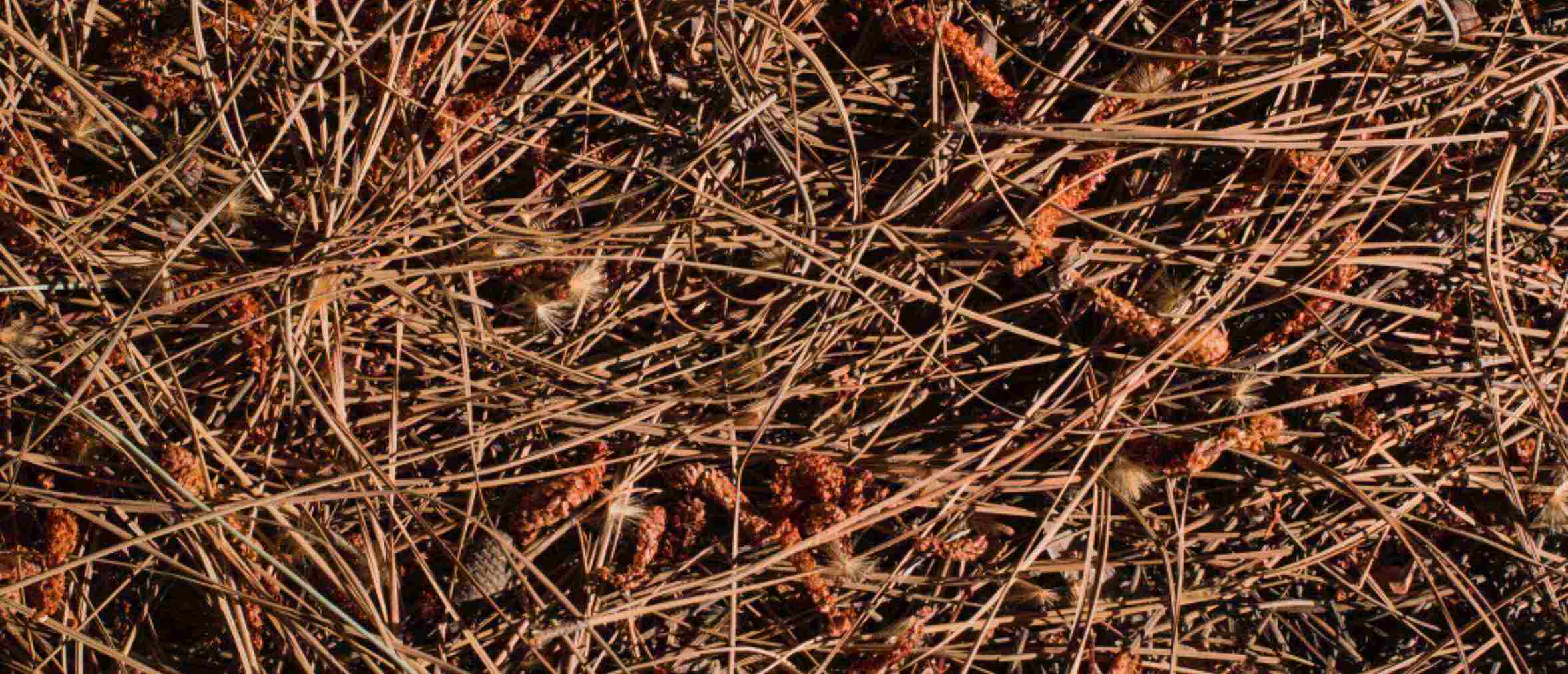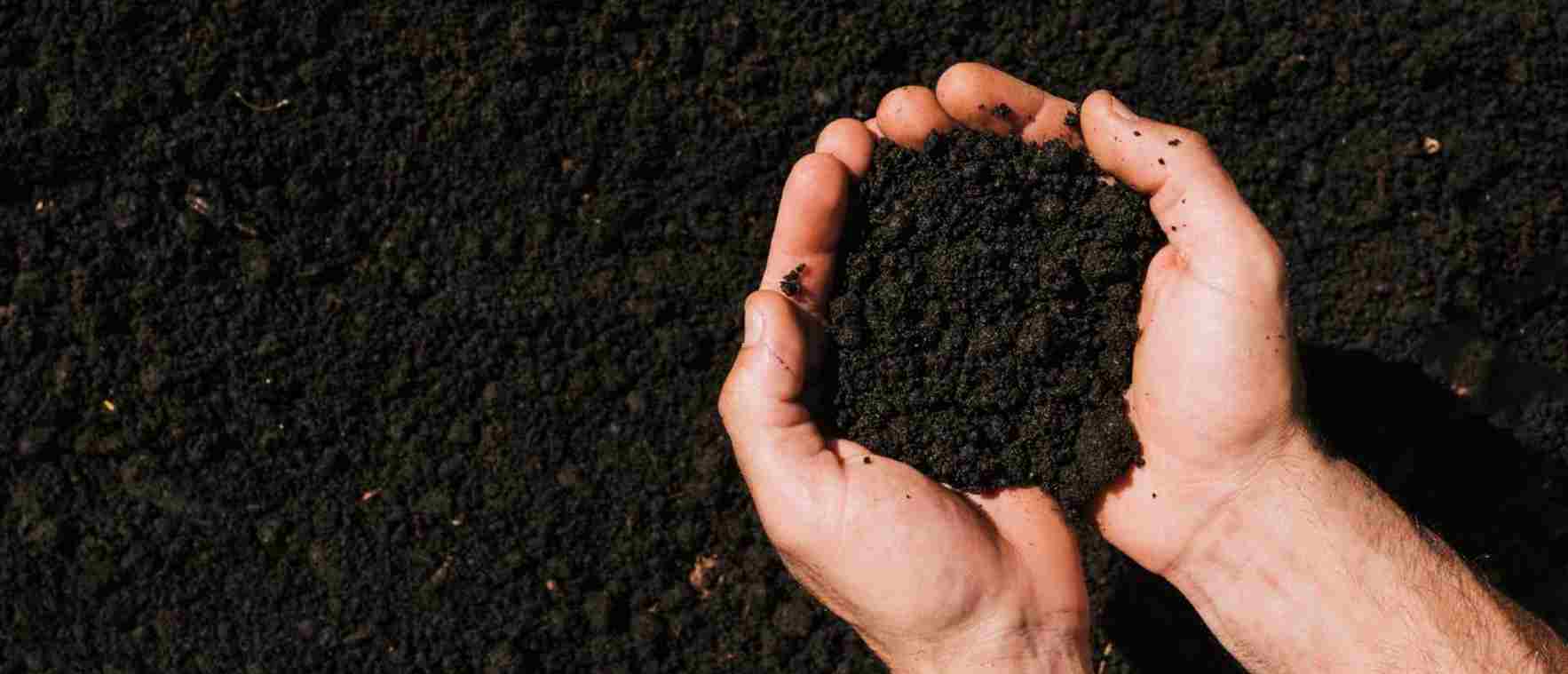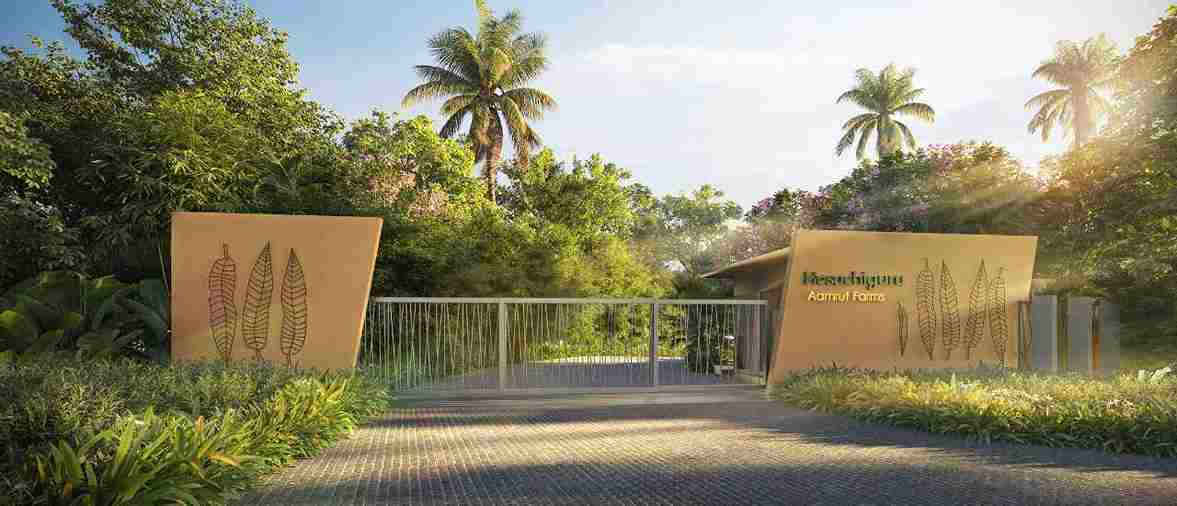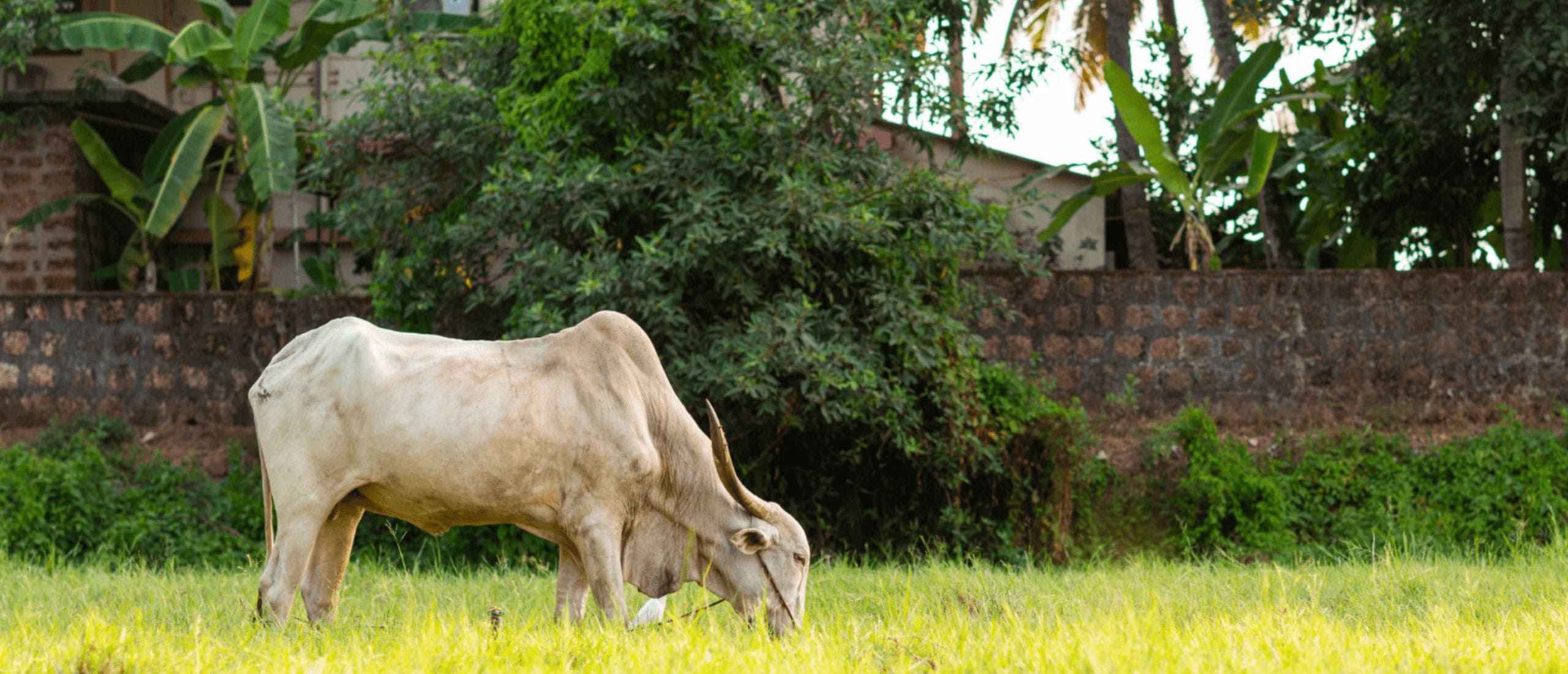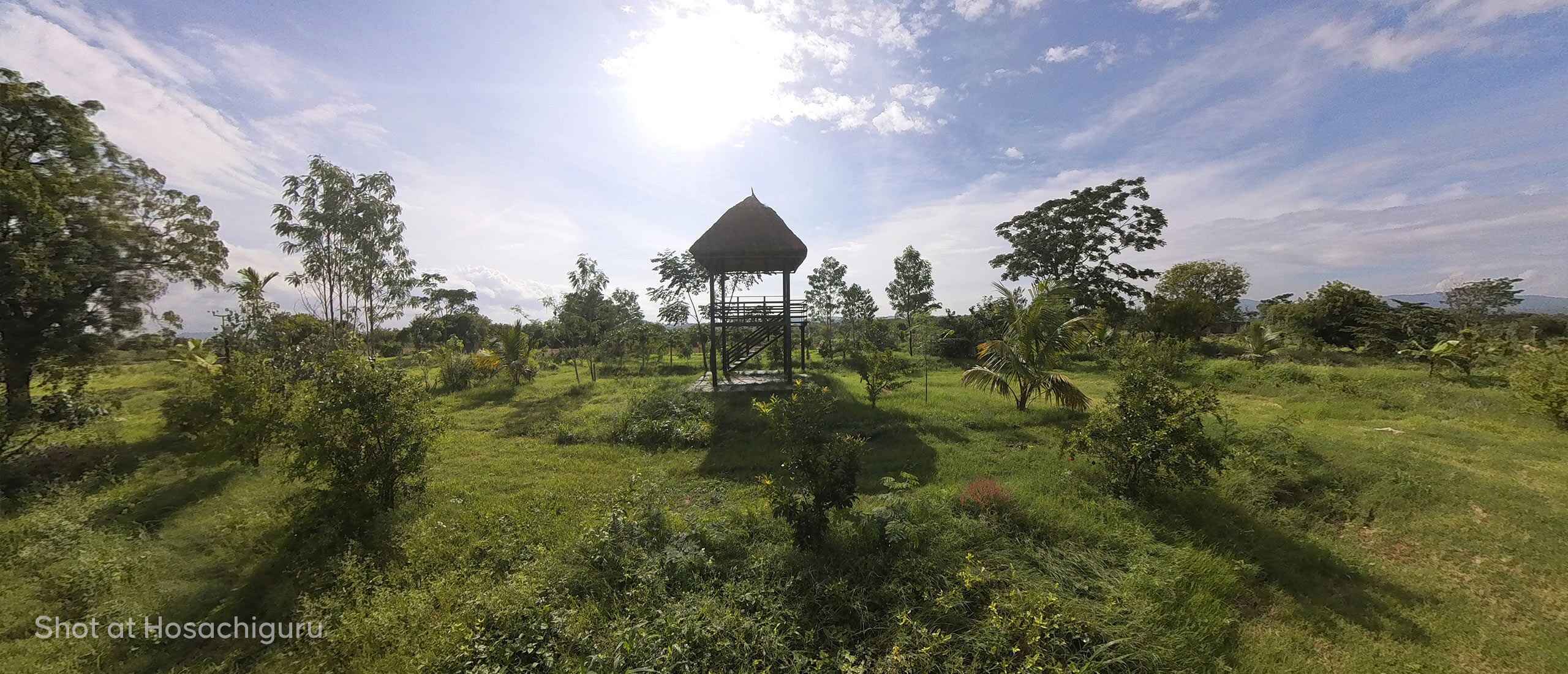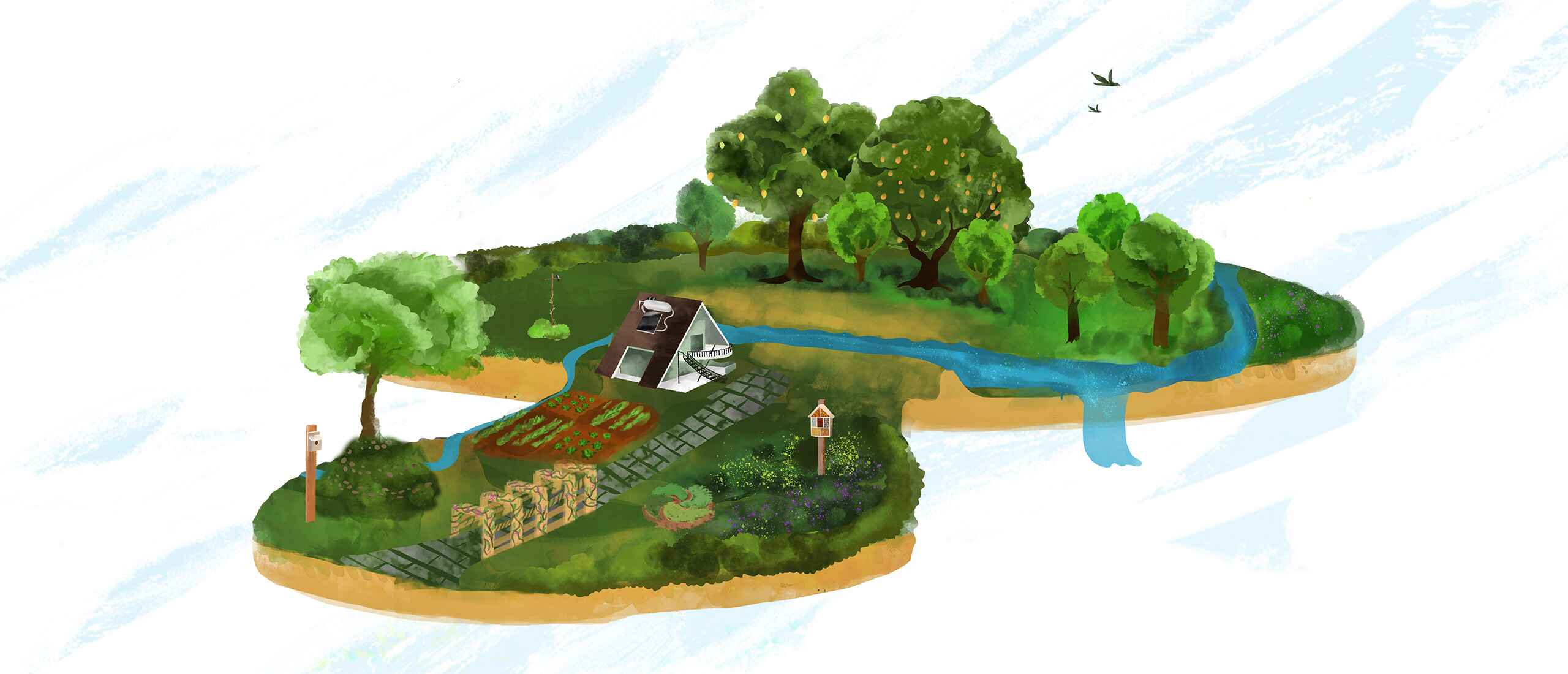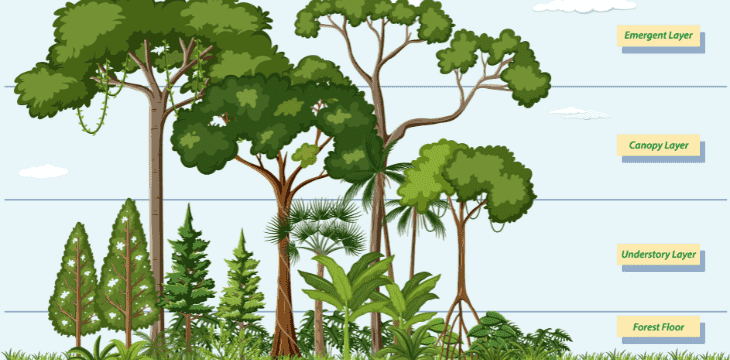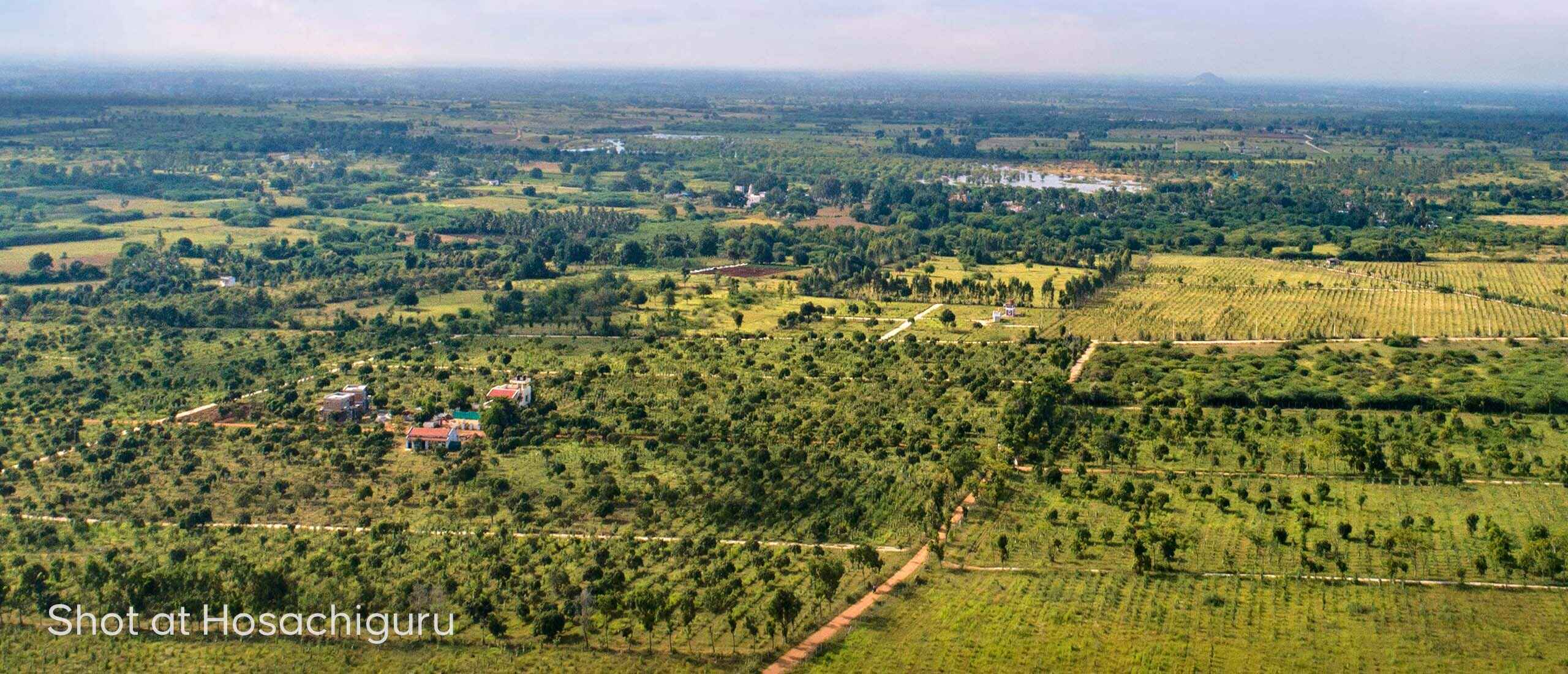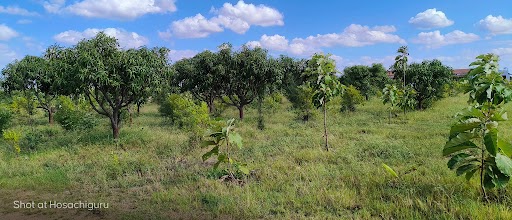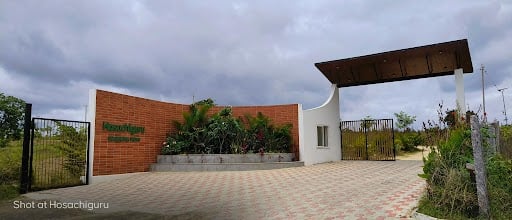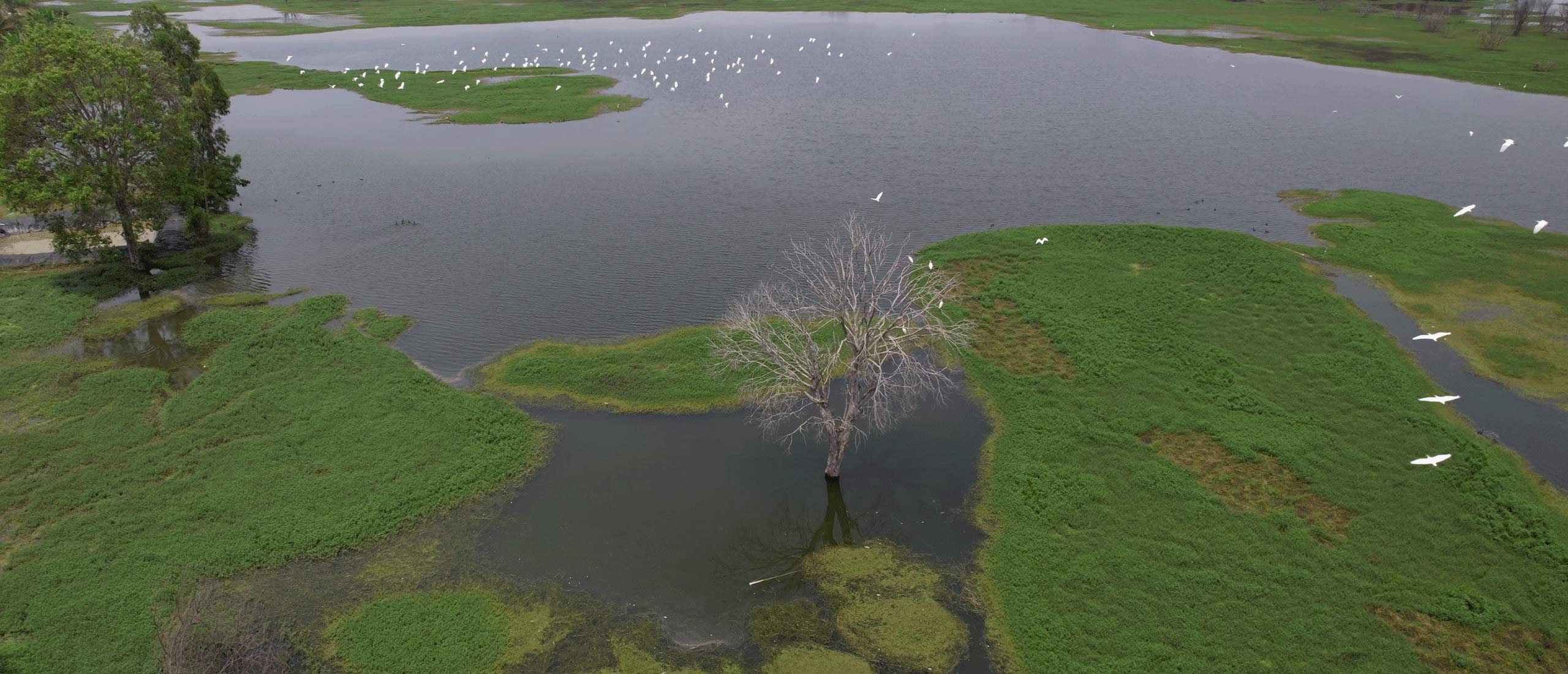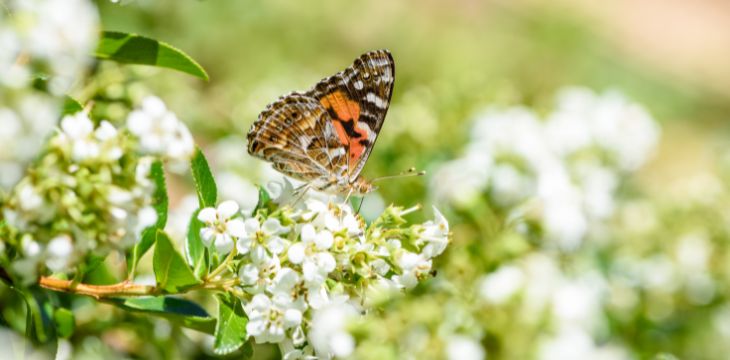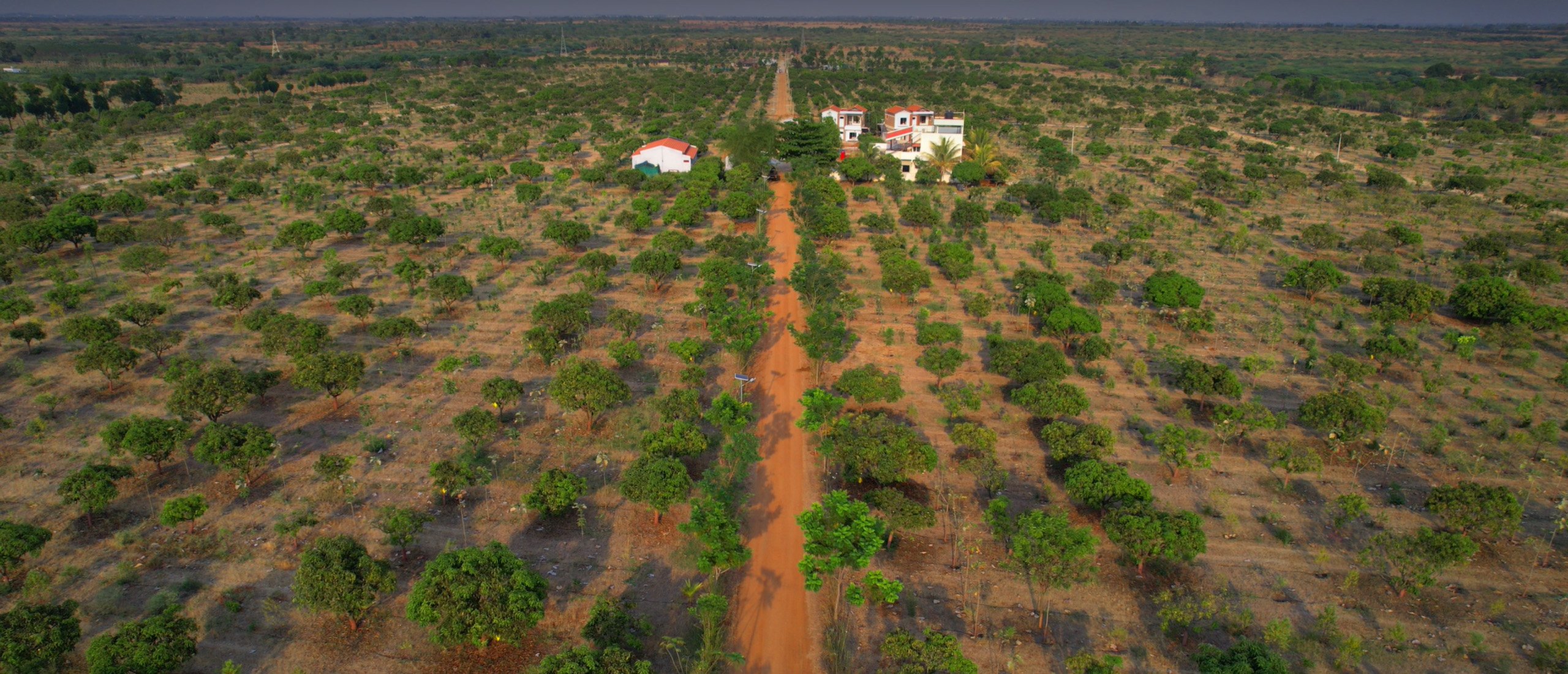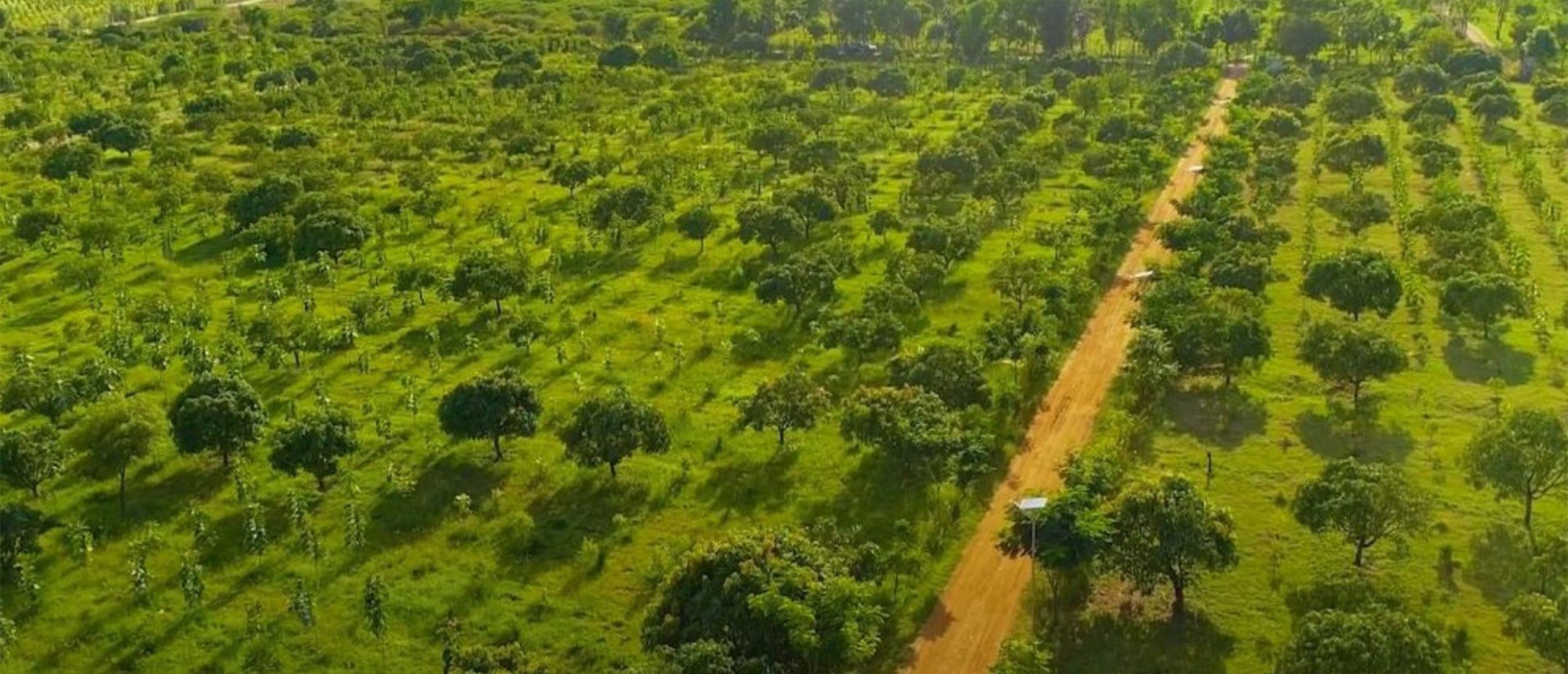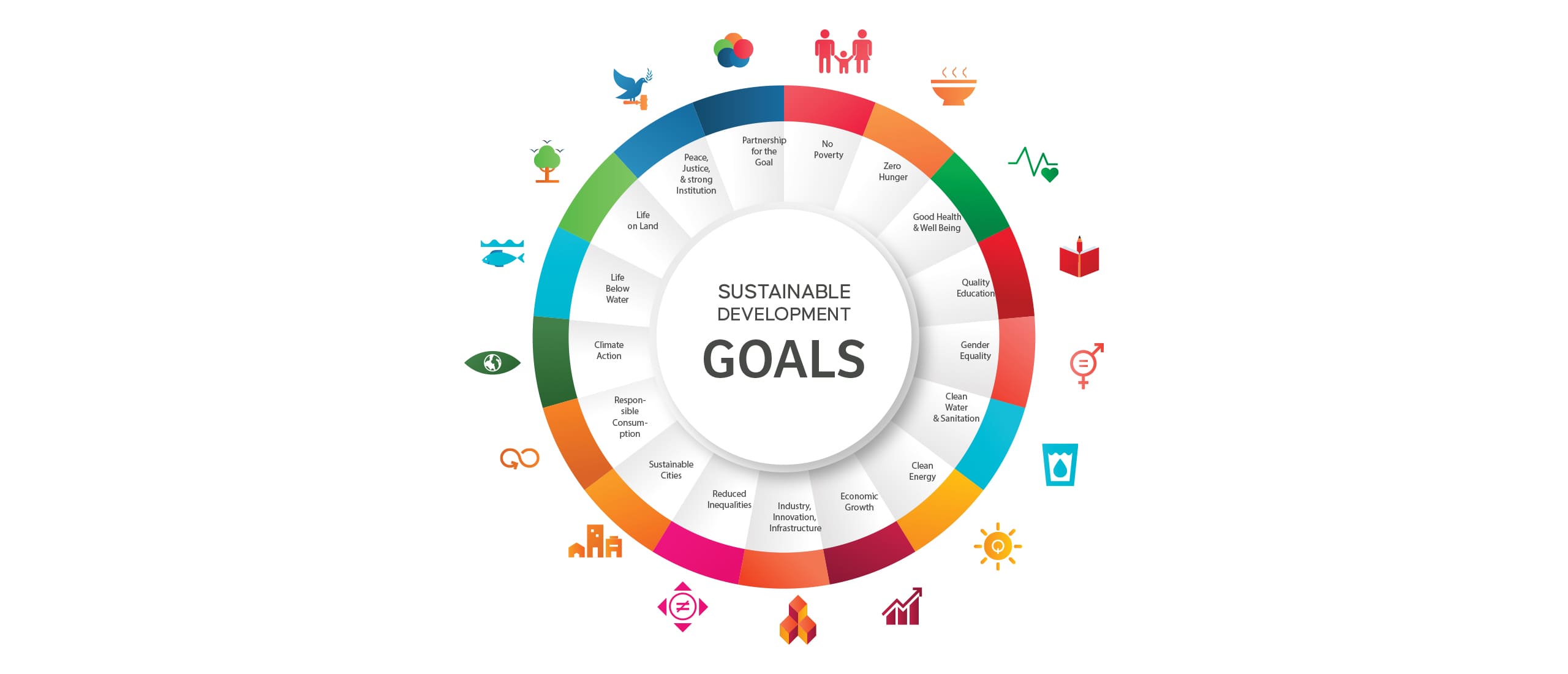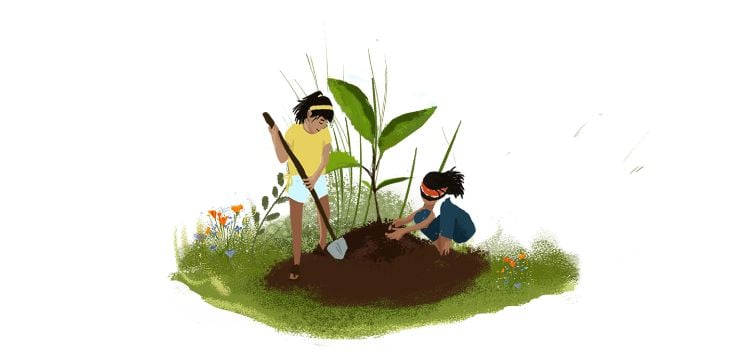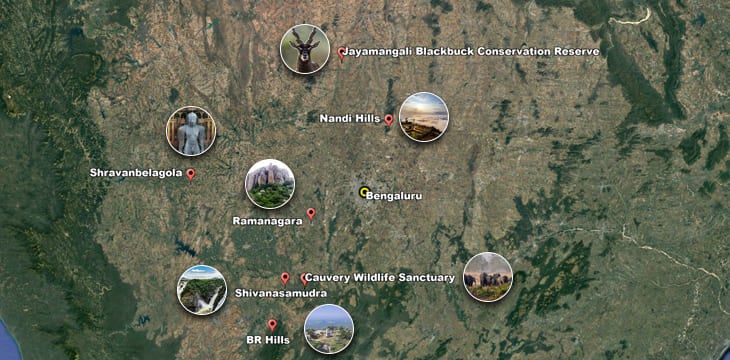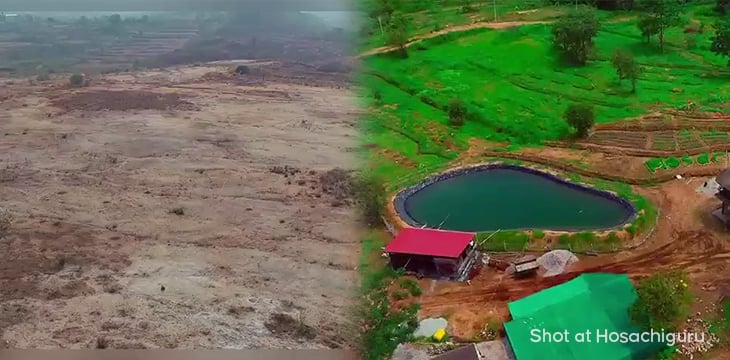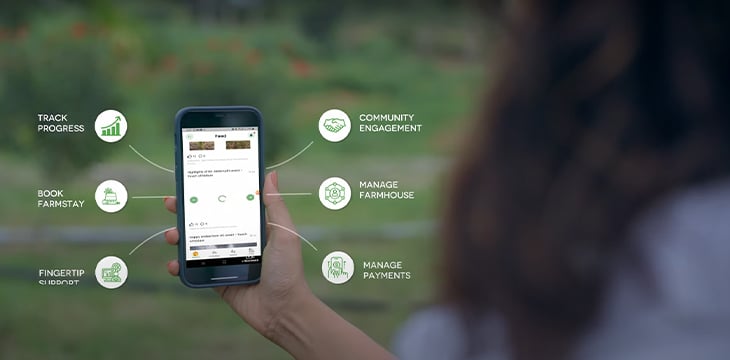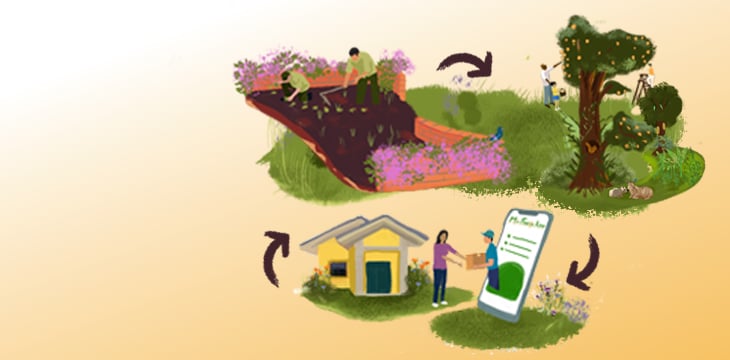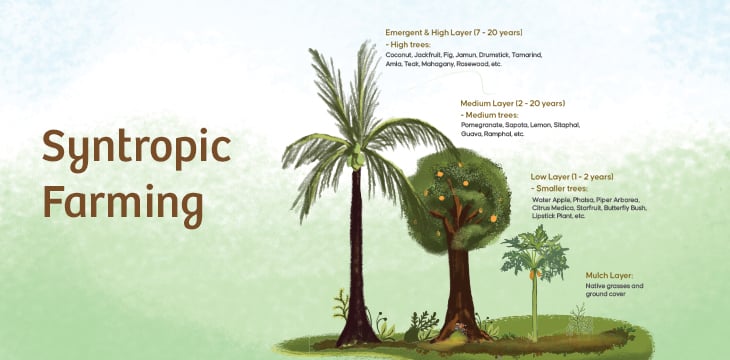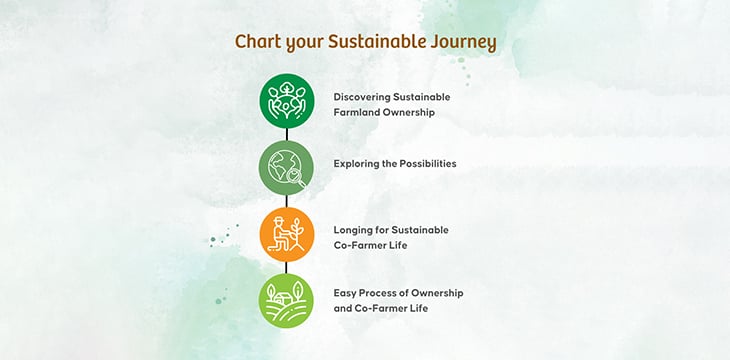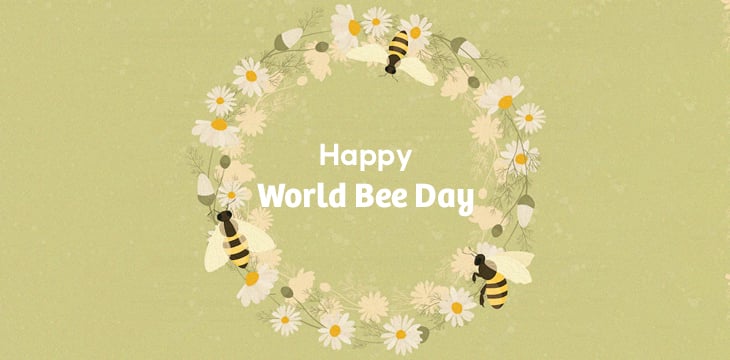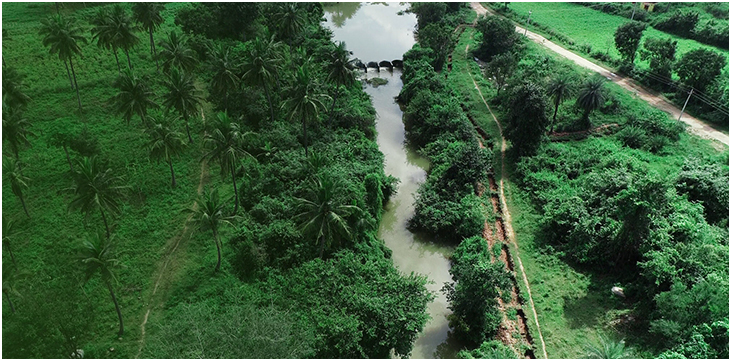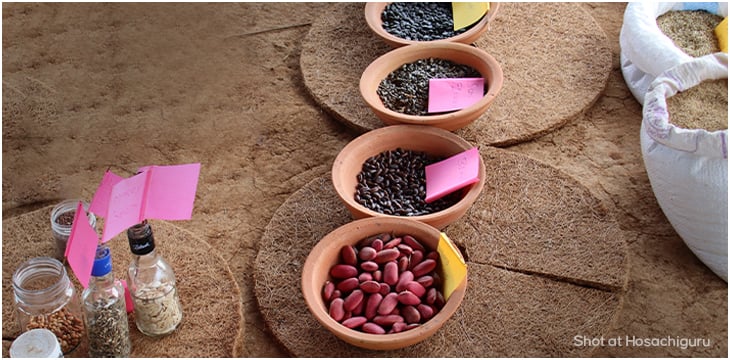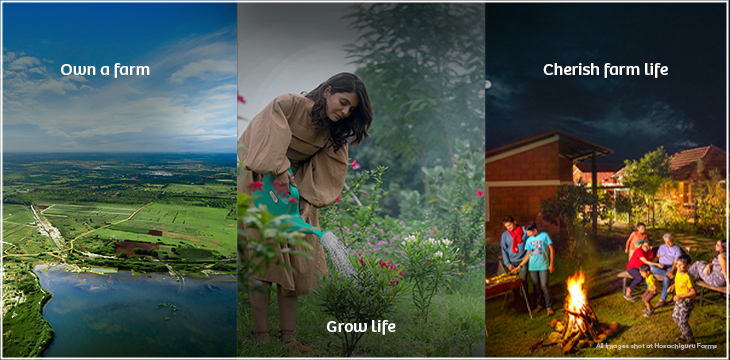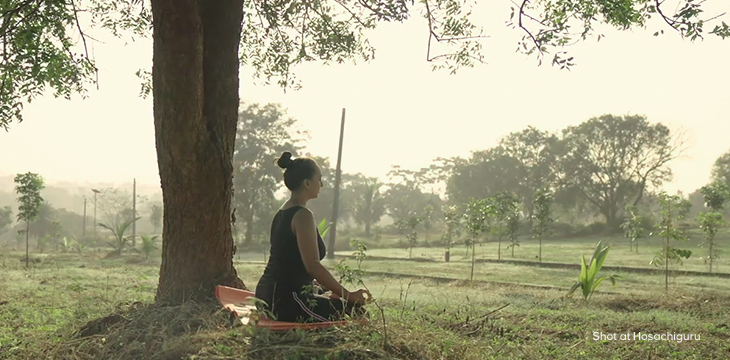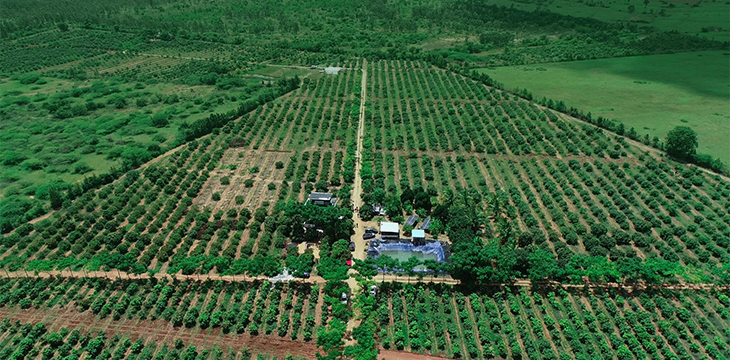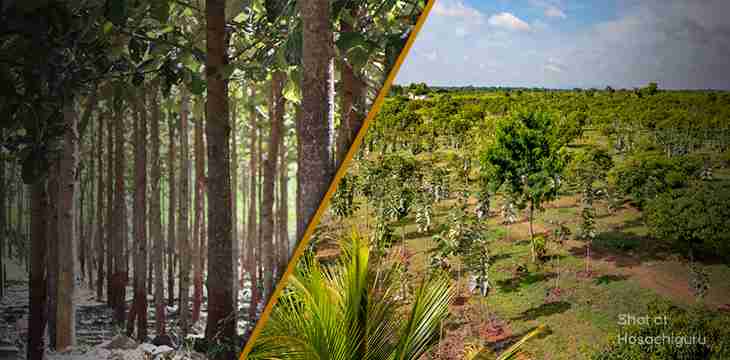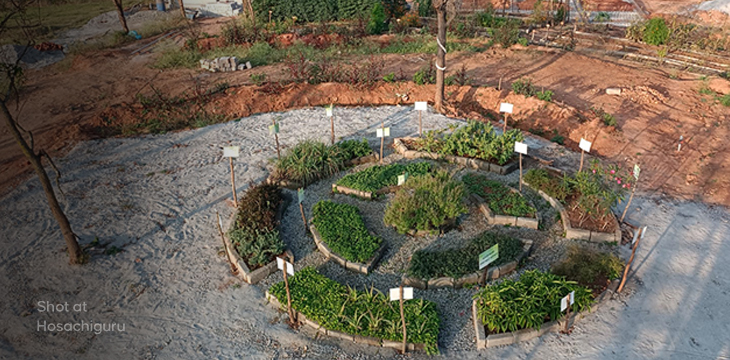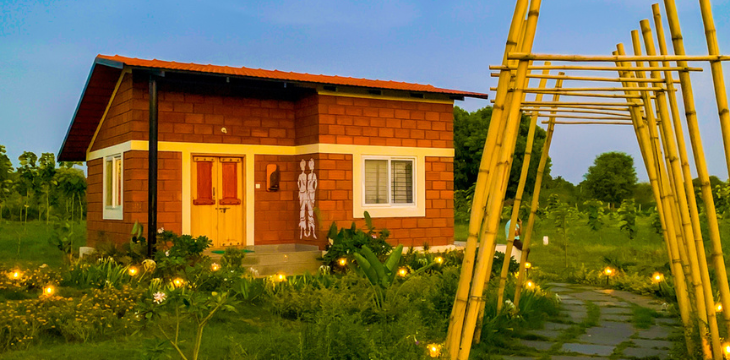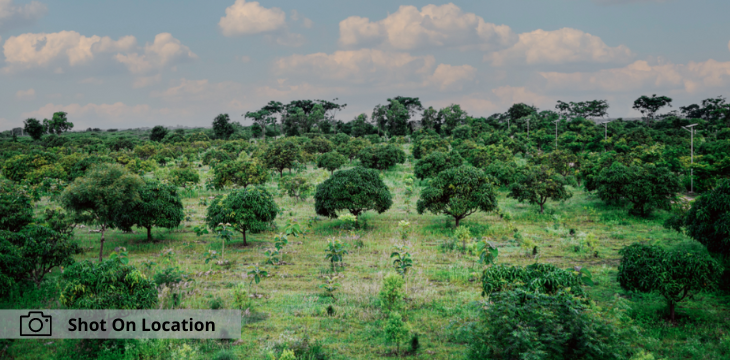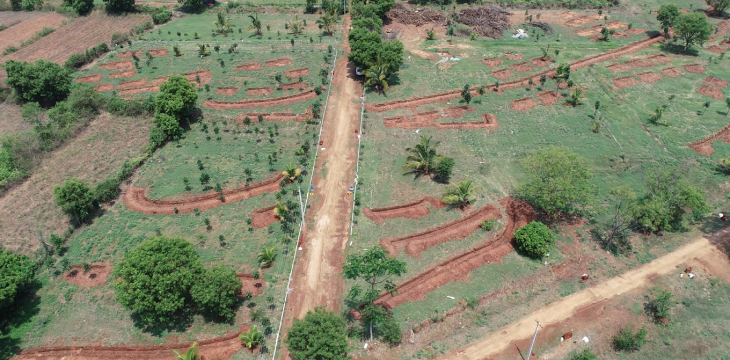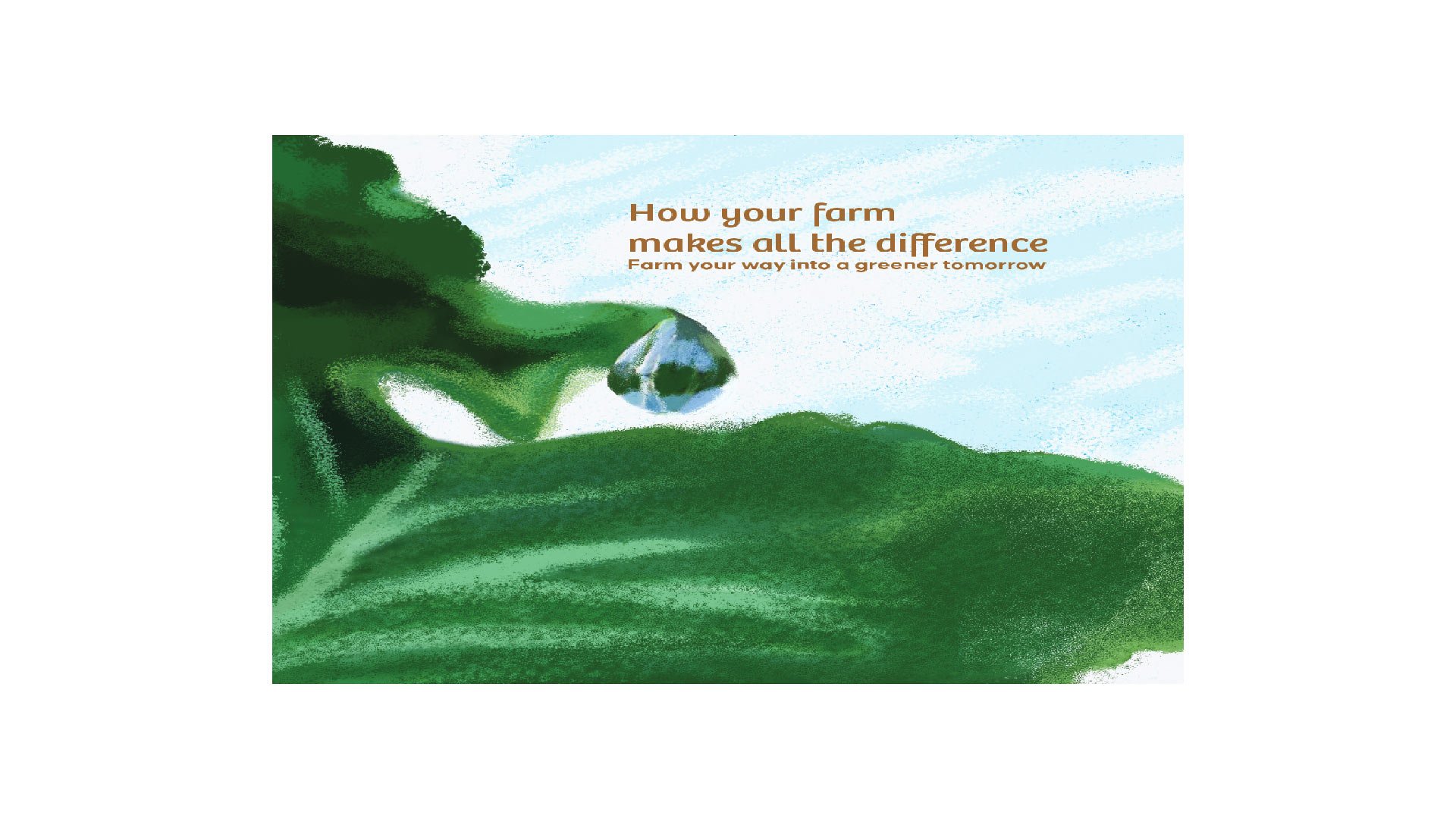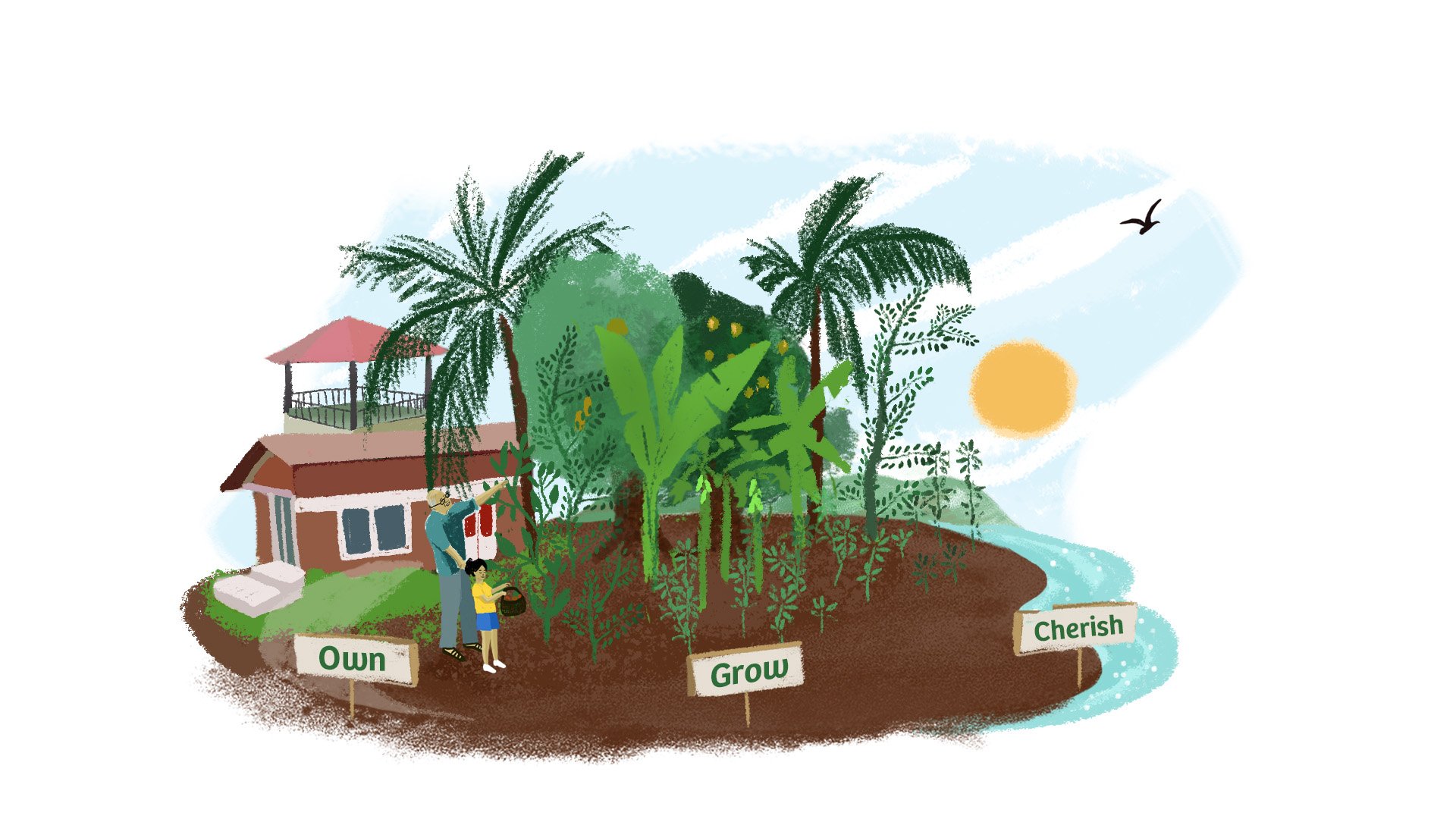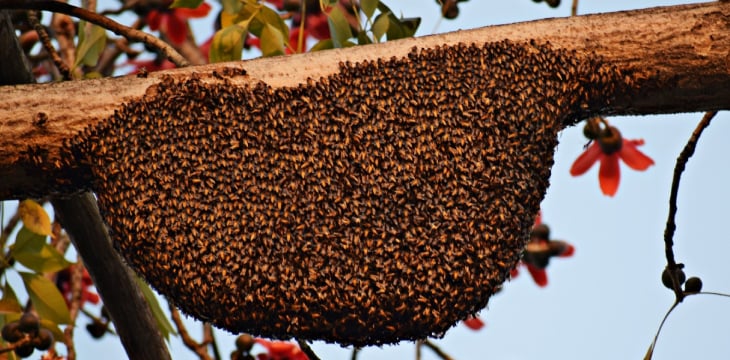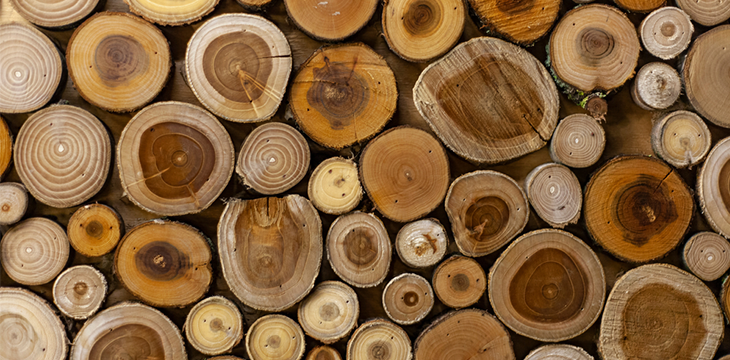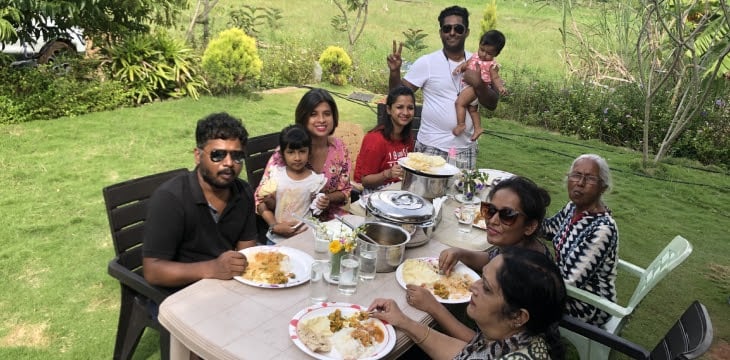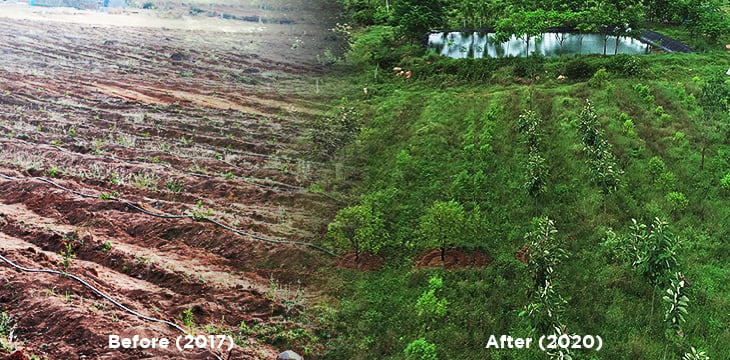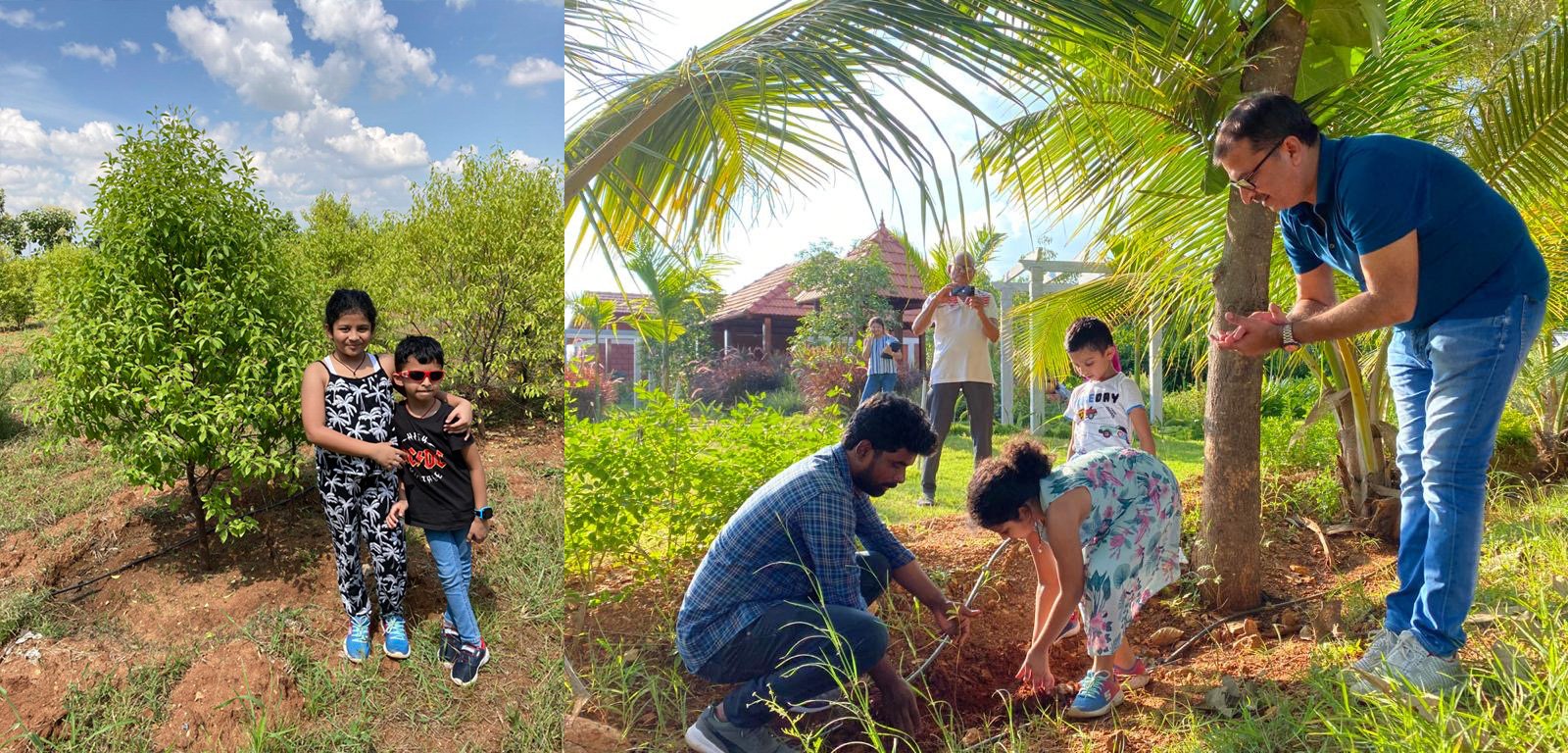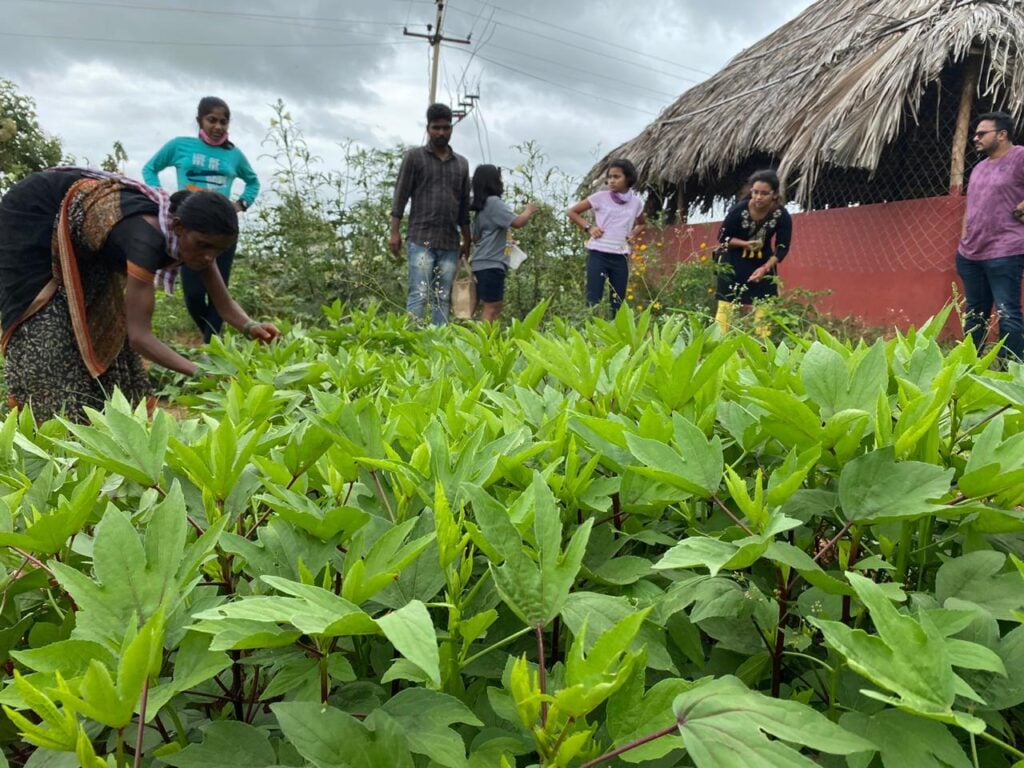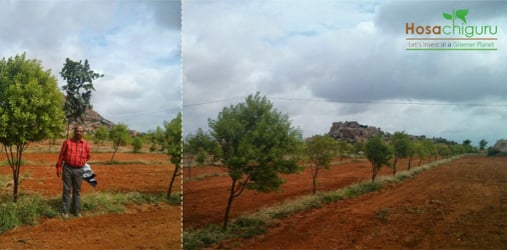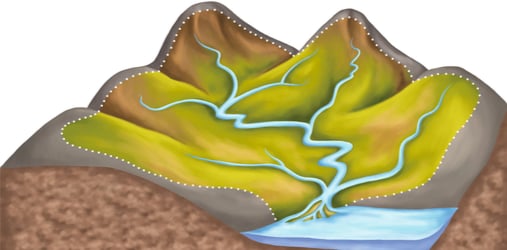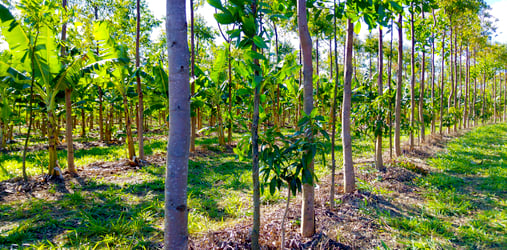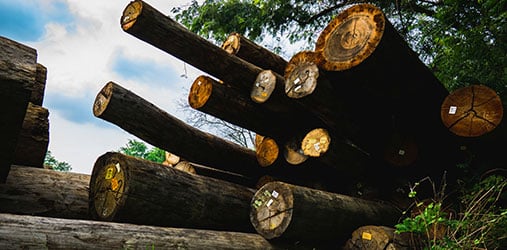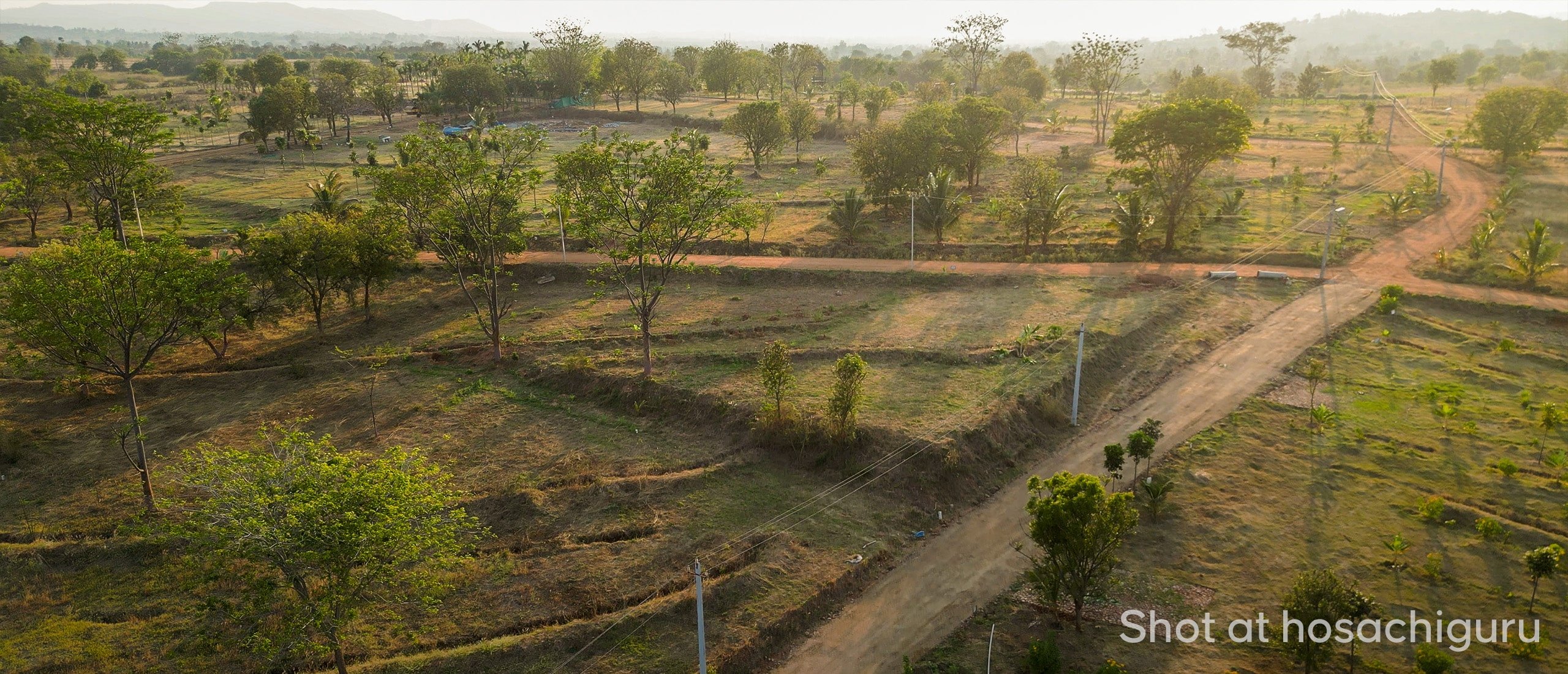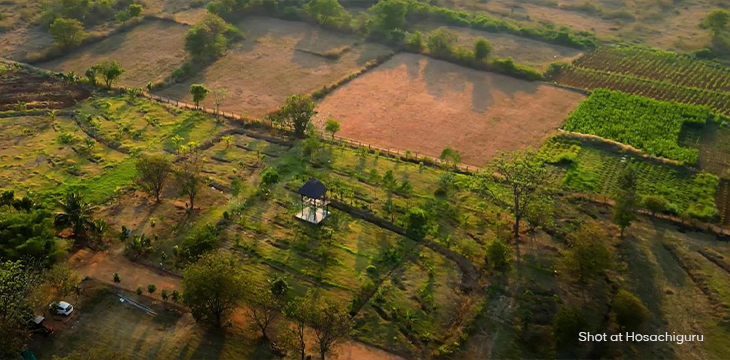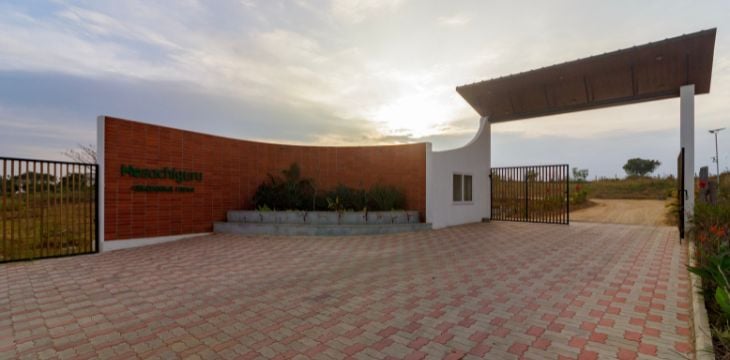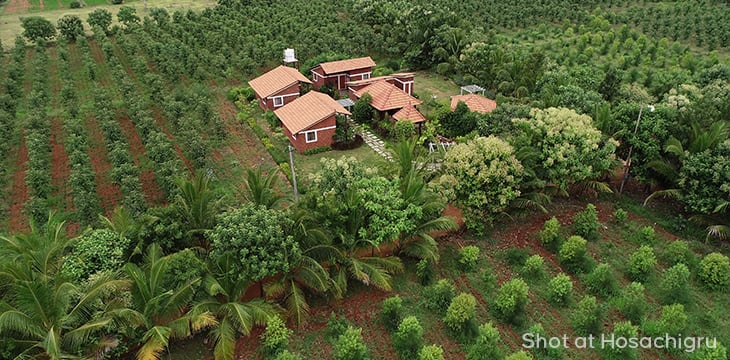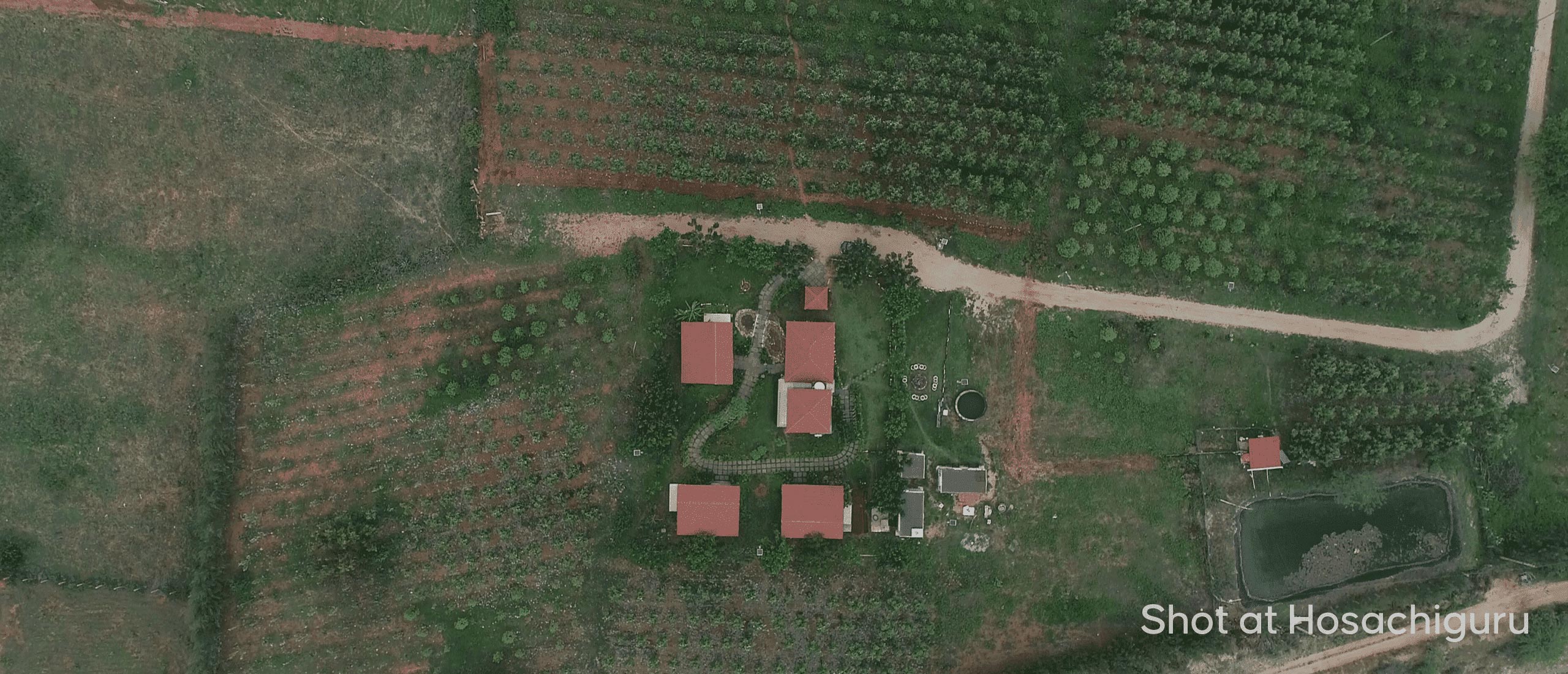June 3, 2025
Why Farm Villa Plots in North Bangalore Are Redefi ning Urban Living
Could your next villa grow your food too?
If you’ve ever stepped into a forest and felt yourself exhale—really exhale—you know there’s a kind of intelligence at work in the natural world that we moderns rarely consult, much less invite to co-author our lives. But what if we did?
What if, instead of imposing our will on the land, we asked it how it wants to live? What if the blueprint for a home wasn’t just a fl oor plan, but a forest plan? These are the kinds of questions the creators of Unnati—a quiet, unfolding landscape on the edges of North Bangalore—seem to have asked. And the result is something rare: a hybrid habitat where humans and forests co-evolve, where half the land is given back to food-bearing trees and fl owering herbs, and the other half is a careful scattering of homes. Not just houses, but living systems, embedded within a larger one.
Hosachiguru Unnati is a thoughtful 50-50 compromise between the cultivated and the wild, the built and the grown. A new kind of commons—one where birds, bees, banyans, and people all find a home.
And that makes it worth staying.
A Hybrid Model: Homes Inside a Forest, Not Next to One
In conventional real estate, the story often begins and ends with square footage. You get a house, maybe a lawn. You can plant a hedge if you’re feeling adventurous. But Unnati begins somewhere else entirely: with soil. With trees. With the idea that a home should be part of an ecosystem, not apart from it.
Half the land here is devoted not to human structures, but to a regenerative food forest. Fruit trees, fl owering natives, pollinator gardens, medicinal herbs, and creeping vines—not planted in ornamental rows, but layered like a natural forest. Tall trees shade smaller ones, which in turn protect ground covers and herbs. In forest ecology, this is called vertical stacking. In human language, we might just call it wisdom.
The homes are not plopped into this forest like invaders. They’re nestled. Tucked in. Each villa is surrounded by trees, pathways, and gardens that blur the boundary between “mine” and “ours.”
It’s not just a new kind of layout. It’s a new kind of land ethic.
Design That Lets Nature Lead
Most landscapes are designed from the top down—by architects, planners, human hands. But Unnati’s designers took a cue from nature’s own playbook. They started with pioneer species—fast-growing, hardy trees that prepare the soil and create canopy. These are the fi rst responders of the forest, turning degraded land into fertile ground. Then came the second wave: slow growers, fl owering species, fruit trees that fl ourish under the shade of their predecessors.
Everything is placed with purpose. Windbreaks protect fragile herbs. Hedges of lemongrass and citronella naturally deter pests. Pathways are lined with tulsi and rosemary—not just for scent, but for use. You begin to realize: this is not landscaping. This is pattern recognition. It’s biomimicry. It’s designed in service of ecology, not ego.
A Garden That Feeds
Some places feed the soul. Some feed the body. At Unnati, the garden does both.
You might begin your morning with a walk through the food forest, brushing past marigold blossoms and neem leaves, plucking a sprig of mint for your tea. The garden is alive with edibles—jamun, guava, mango, wild greens. There are planter boxes tucked along the pathways, pergolas laced with passionfruit vines, and groves where katuk grows—an ancient green packed with more nutrition than spinach.
Children know which tree gives what. Adults learn to compost. The landscape becomes a teacher.
What you begin to understand is that this place wasn’t made to be admired from the window. It was made to be inhabited. Lived in. Interacted with.
The Quiet Intelligence of Water
If soil is the foundation of life, water is its bloodstream. And Unnati has thought deeply about both.
Rather than drain the rain, Unnati harvests it. Recharge pits and Bhungroo systems allow monsoon water to percolate deep into the ground, replenishing the water table. Greywater is fi ltered and reused. Blackwater is treated in ways that return nutrients to the soil instead of sending them downstream.
It’s a closed loop system—an echo of what forests already do. Here, every drop counts. Every puddle has a purpose. There’s a kind of humility in that. A sense that we’re not above the cycles of nature, but part of them.
More Than a Home—A Living Culture
So what is Unnati, really? It’s not just villas for sale in North Bangalore. It’s not just plots or real estate. It’s a prototype. A provocation. A quiet rebellion against the sterile, gated idea of modern living.
It’s a place where a community is built with compost pits, shared baskets, and common gardens. Where fi re pits invite conversation. Where walking trails don’t just take you somewhere—they connect you to something.
At Unnati, you can grow your own herbs. You can eat from your own tree. You can watch a butterfl y pollinate the fl owers that will feed your neighbor. The boundaries between self and other—between home and habitat—begin to blur. And maybe that’s the point.
Reclaiming What We’ve Forgotten
In our quest for progress, we’ve paved over more than land. We’ve lost rhythms. We’ve lost relationships—with place, with food, with the living systems that quietly sustain us.
Unnati doesn’t promise to solve that entirely. But it does offer a way back. A way to reconnect. Not by going off-grid or giving things up, but by designing with nature instead of against it. By choosing beauty that functions. By recognizing that the smartest planner on any project might just be the soil itself.
To live at Unnati is to live in a system that gives back. It’s aspirational, yes—but it’s also deeply grounded. Because maybe the future of sustainable living doesn’t lie in technology or escape—but in attention. In partnership. In belonging.
And maybe that future has already taken root—half forest, half home—in a quiet corner of North Bangalore.
Unnati: Your villa, your forest, your future in harmony.
